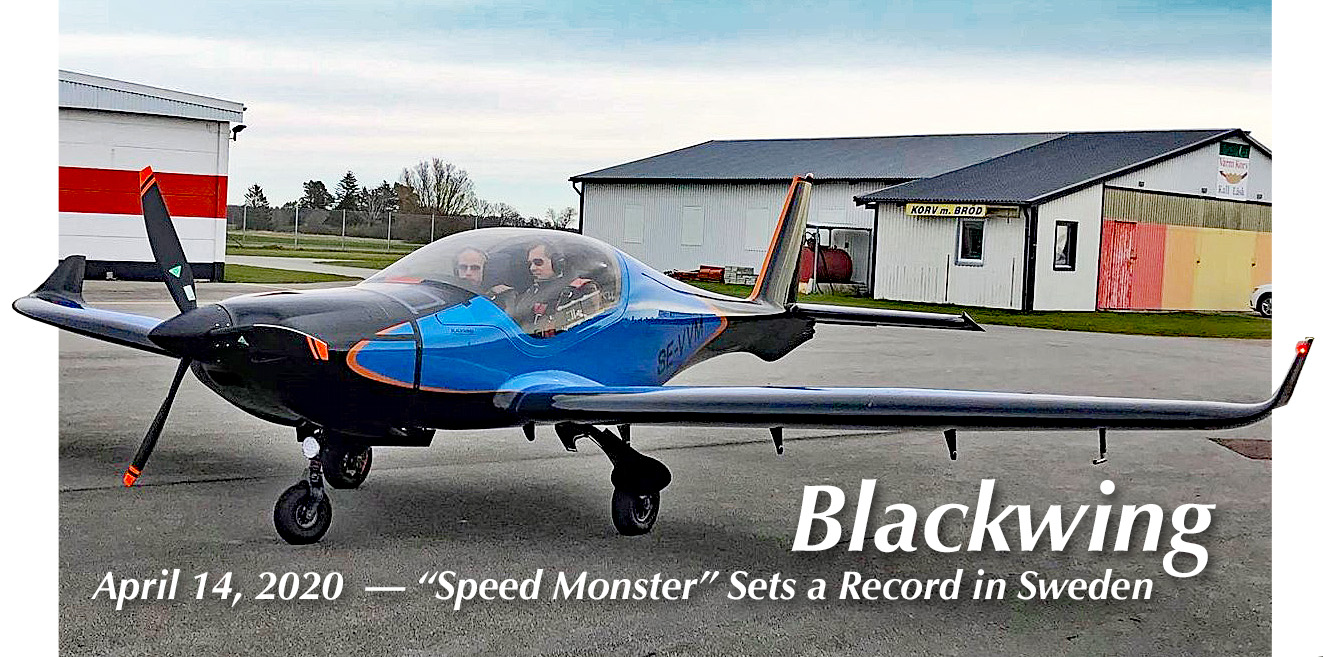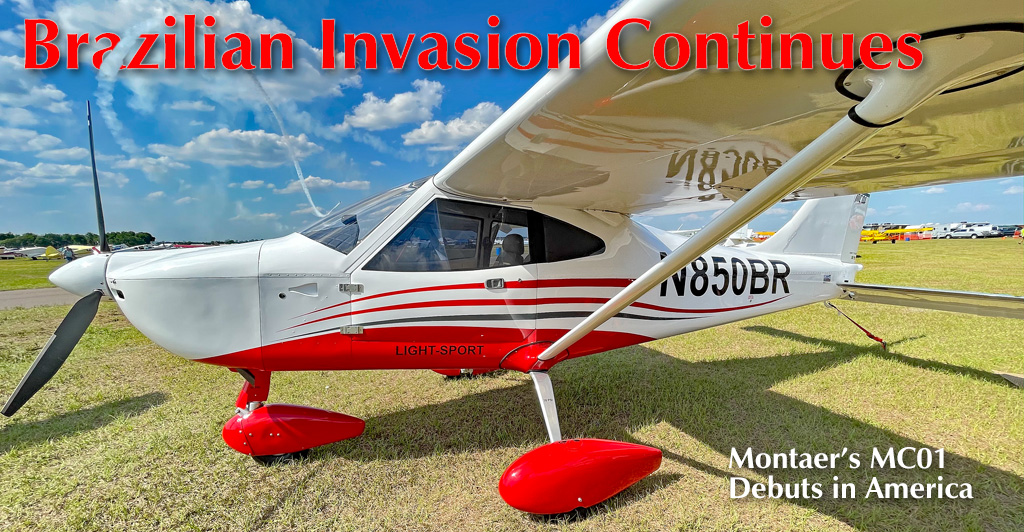
Perhaps you knew years ago that Brazil was an aviation beehive of activity. Since Santos-Dumont early last century, the South American country has been known for aviation. This millennia, the Brazilians have adapted to Light-Sport Aircraft and ASTM standards, which the country’s CAA accepts (as do several other nations). Not only have they populated the skies over Brazil, but several companies have moved to establish their business in the USA. Seamax, Super Petrel, the engineering behind the Texas Aircraft Colt, Paradise P-1, Flyer SS …all these are Brazilian designs and except for the last two, all have an active U.S. presence and all have the Brazilian factory as a partner or owner. For the record, this is also how Tecnam and others have handled their American representation. This may not assure success but it does keep the factory deeply involved with their entry to aviation’s largest marketplace.


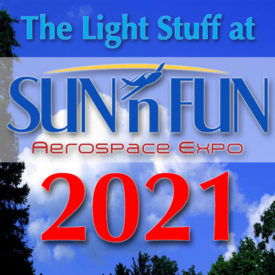 This millennia, the Brazilians have adapted to Light-Sport Aircraft and ASTM standards, which the country's CAA accepts (as do several other nations). Not only have they populated the skies over Brazil, but several companies have moved to establish their business in the USA.
This millennia, the Brazilians have adapted to Light-Sport Aircraft and ASTM standards, which the country's CAA accepts (as do several other nations). Not only have they populated the skies over Brazil, but several companies have moved to establish their business in the USA.
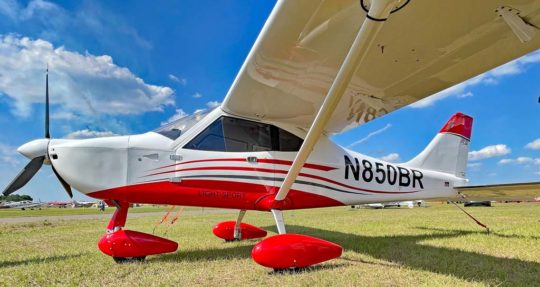 Montaer's MC01 starts with 4130 molybdenum steel tube "to provide greater safety to the crew." MC01 is skinned with an aluminum fuselage and wings. These materials are popular with American pilots who are aware they can achieve repairs almost anywhere.
MC01 is powered with the 100 horsepower
Montaer's MC01 starts with 4130 molybdenum steel tube "to provide greater safety to the crew." MC01 is skinned with an aluminum fuselage and wings. These materials are popular with American pilots who are aware they can achieve repairs almost anywhere.
MC01 is powered with the 100 horsepower 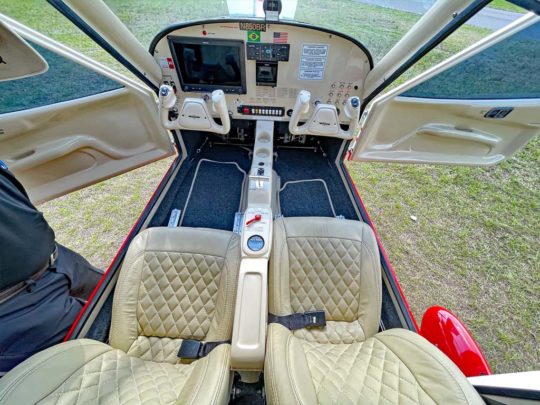 MC01 has dual control yokes with a steerable nose wheel and dual toe brakes. Although many Sport Pilots say they prefer — or at least have adjusted to — joystick control, many pilots find control yokes preferable. No joystick option is presently available.
However, Montaer has also followed Paradise's lead by offering hand controls to accommodates pilots who want to fly but have lost the use of their legs. In fact, the very first American purchase of Montaer MC01 is going to such a pilot up near Oshkosh. I'm sure I join many others in congratulating Bruno and Montaer in making arrangements for such people to achieve their dreams of flight.
MC01 has dual control yokes with a steerable nose wheel and dual toe brakes. Although many Sport Pilots say they prefer — or at least have adjusted to — joystick control, many pilots find control yokes preferable. No joystick option is presently available.
However, Montaer has also followed Paradise's lead by offering hand controls to accommodates pilots who want to fly but have lost the use of their legs. In fact, the very first American purchase of Montaer MC01 is going to such a pilot up near Oshkosh. I'm sure I join many others in congratulating Bruno and Montaer in making arrangements for such people to achieve their dreams of flight.
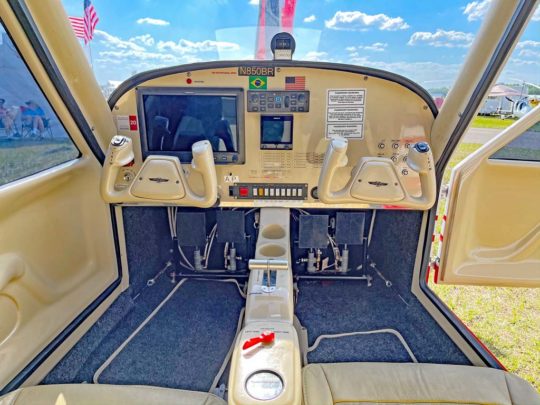 Elevator trim controls are provided on both yokes. At the base of the instrument panel pilots will find all circuit breakers and other switches. Throughout this design, you see a layout that most pilots will find familiar and comfortable. All these common controls may help pilots quickly adapt to flying Light-Sport.
Montaer has installed all leather seats, headliner and side panels (photo). The interior fit and finish will please most pilots. Both seats are fully adjustable forward and back allowing, for comfort for tall and short people. These adjustments can be made while sitting in the seat. Yet MC01's seats do more.
Again similar to Paradise models — which are no longer available in the USA — MC01 has fully-reclining seats. While the company said, "This is important for tall people to adjust the seats for more head space," it brings additional benefits. For example, if you want to camp in your MC01, the reclining seats can provide a sleeping surface. The aft cabin has sufficient of room to permit this.
Elevator trim controls are provided on both yokes. At the base of the instrument panel pilots will find all circuit breakers and other switches. Throughout this design, you see a layout that most pilots will find familiar and comfortable. All these common controls may help pilots quickly adapt to flying Light-Sport.
Montaer has installed all leather seats, headliner and side panels (photo). The interior fit and finish will please most pilots. Both seats are fully adjustable forward and back allowing, for comfort for tall and short people. These adjustments can be made while sitting in the seat. Yet MC01's seats do more.
Again similar to Paradise models — which are no longer available in the USA — MC01 has fully-reclining seats. While the company said, "This is important for tall people to adjust the seats for more head space," it brings additional benefits. For example, if you want to camp in your MC01, the reclining seats can provide a sleeping surface. The aft cabin has sufficient of room to permit this.
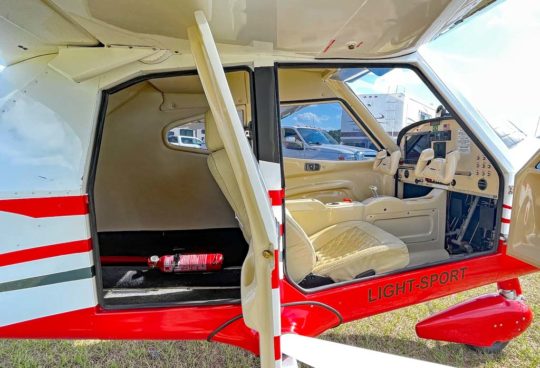 Although
Although 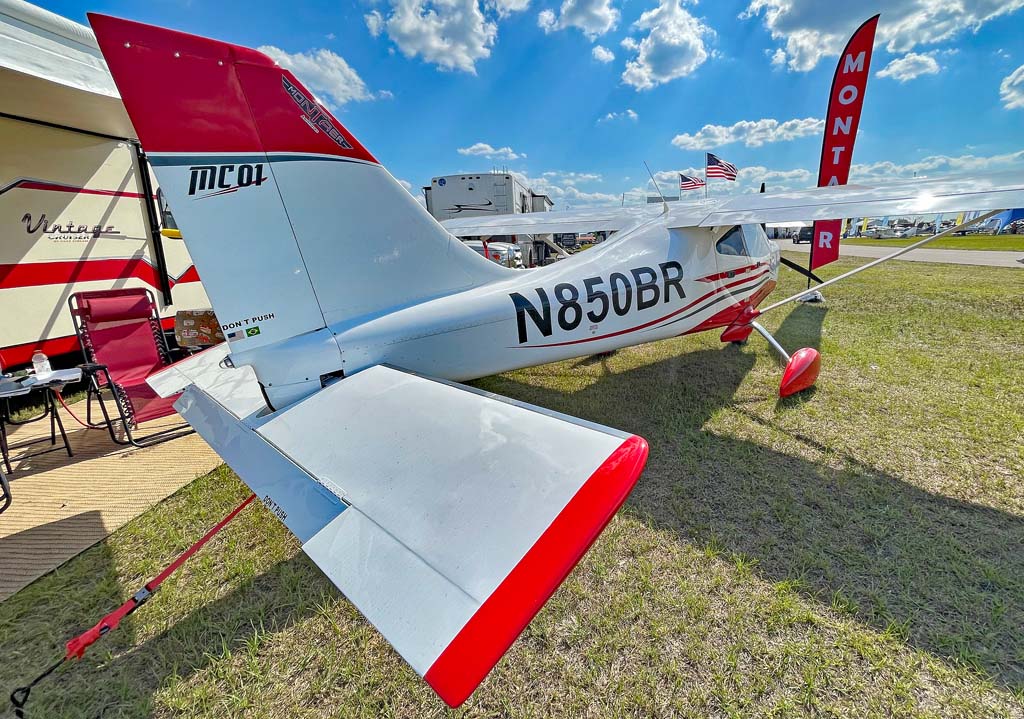
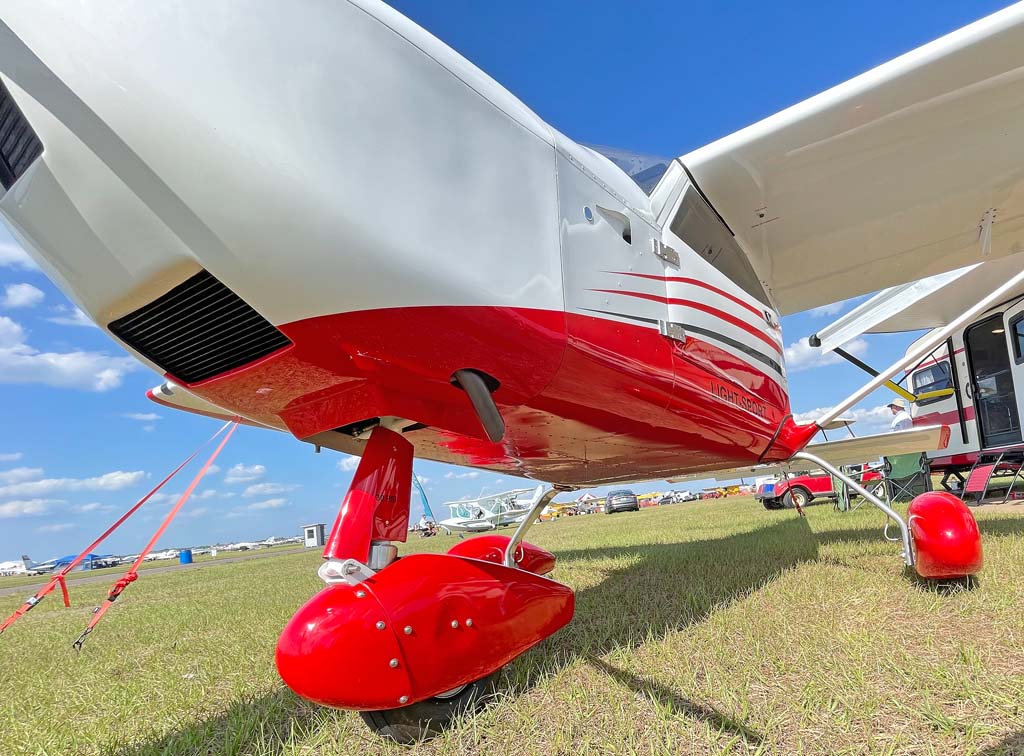
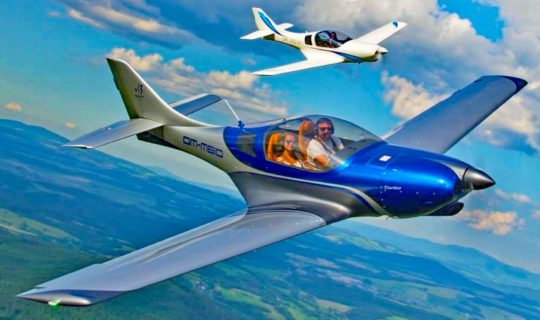 The subjects of today's post from Lakeland, Florida, VL3 from JMB Aircraft plus Tarragon Aircraft — along with a handful of other designs (see this
The subjects of today's post from Lakeland, Florida, VL3 from JMB Aircraft plus Tarragon Aircraft — along with a handful of other designs (see this 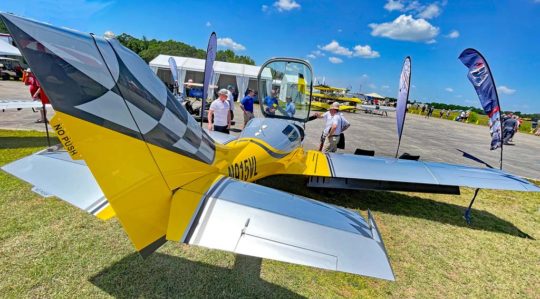
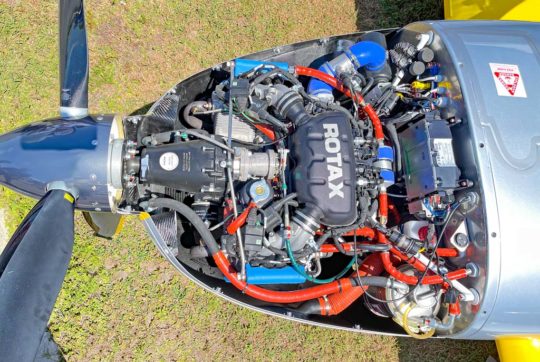
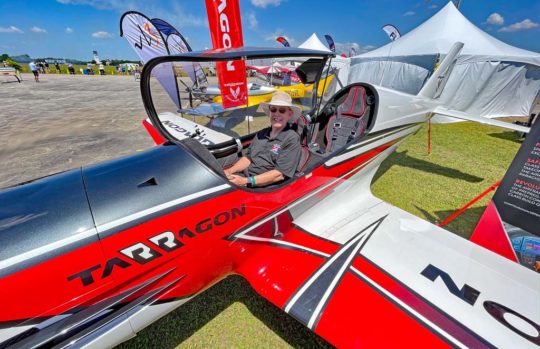 Of course, such high-tech construction also pushes up the price. Neither of these airplanes are in the range of what I'd call "affordable" for readers of this website. In fact Tarragon is carving out a space near the very top of where LSA are priced. In their booth, I heard staff quote numbers north of $300,000. It's a breathtaking aircraft with a breathtaking price to match.
In addition, as with VL3, Tarragon must be built and registered as an Experimental Amateur Built aircraft. As this requirement does not exist in Europe, I don't know how well configured they are to assist builders but the U.S. representatives are likely to handle that. If this aircraft interests you for purchase, you'll want to talk to the fellows repressenting it in Illinois.
Of course, such high-tech construction also pushes up the price. Neither of these airplanes are in the range of what I'd call "affordable" for readers of this website. In fact Tarragon is carving out a space near the very top of where LSA are priced. In their booth, I heard staff quote numbers north of $300,000. It's a breathtaking aircraft with a breathtaking price to match.
In addition, as with VL3, Tarragon must be built and registered as an Experimental Amateur Built aircraft. As this requirement does not exist in Europe, I don't know how well configured they are to assist builders but the U.S. representatives are likely to handle that. If this aircraft interests you for purchase, you'll want to talk to the fellows repressenting it in Illinois. 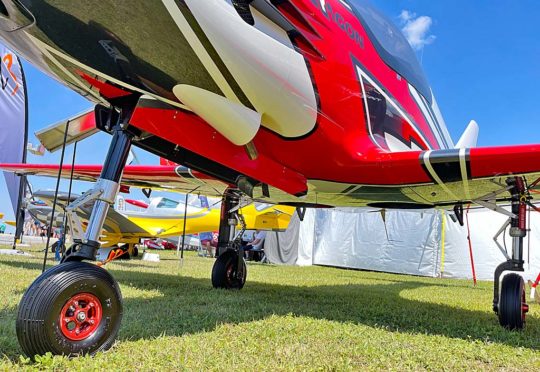
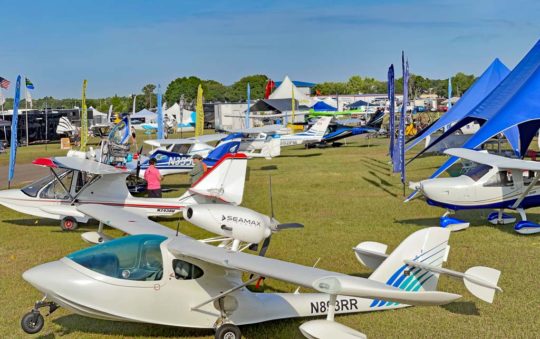 On a beautiful evening, almost 200 light aircraft businesspeople attended the DeLand Showcase annual reception. Smiles were plentiful as these vendors enjoyed a return to normalcy and an airshow routine that fuels their enterprise so they can better serve their pilot customers.
Hurray for
On a beautiful evening, almost 200 light aircraft businesspeople attended the DeLand Showcase annual reception. Smiles were plentiful as these vendors enjoyed a return to normalcy and an airshow routine that fuels their enterprise so they can better serve their pilot customers.
Hurray for 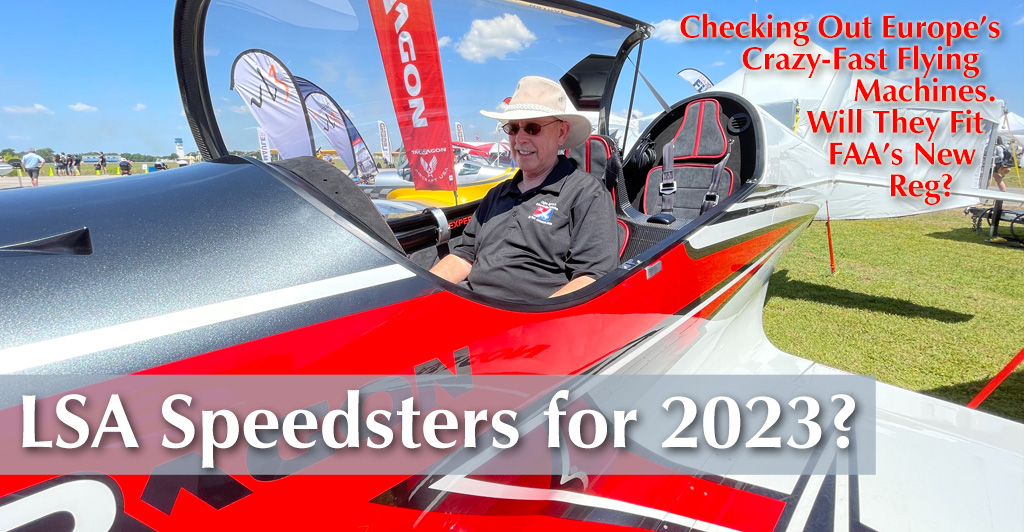
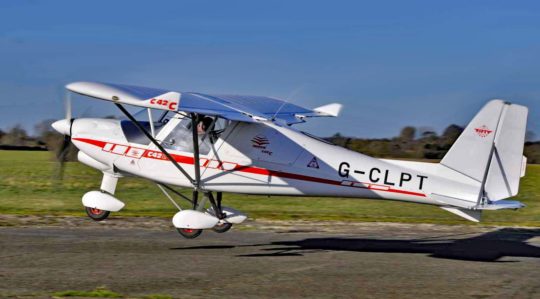 Yet no one can dispute that C42 — once rebadged as Cyclone for American buyers — has for many years been THE success story in Germany. This southern German company celebrated its 50th anniversary in 2020.
Our favorite British aerojournalist,
Yet no one can dispute that C42 — once rebadged as Cyclone for American buyers — has for many years been THE success story in Germany. This southern German company celebrated its 50th anniversary in 2020.
Our favorite British aerojournalist,  Now in its "C" model configuration, C42 is one of the most successful European microlights (a category between Part 103 ultralights and LSA, but closer to the latter). Comco Ikarus has evolved the machine into a fine airplane.
In England, C42 is sold by
Now in its "C" model configuration, C42 is one of the most successful European microlights (a category between Part 103 ultralights and LSA, but closer to the latter). Comco Ikarus has evolved the machine into a fine airplane.
In England, C42 is sold by 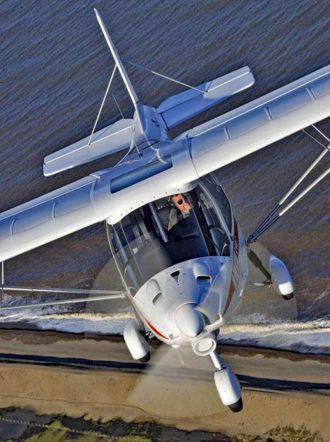
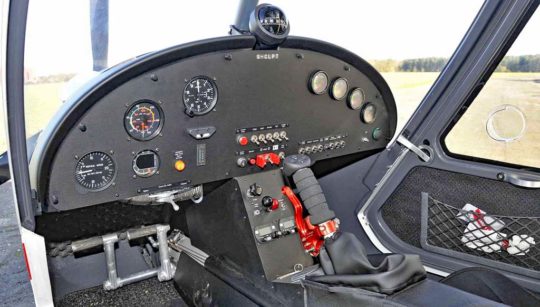 Aft of the cockpit there’s a frangible cover which the BRS rocket fires through, and a very large quickly removable panel on the port side, through which the fuel quantity can be seen and a lot of the interior structure visually inspected. The rear baggage bay can hold up to 100 pounds, weight and balance allowing.
C42C's tail consists of a strut-braced tailplane and separate elevator, a slightly swept-back vertical stabilizer, which carries a broad-chord rudder and a small ventral fin tail bumper. Wings, tail, flaps and control surfaces are all covered in XLAM (a type of sturdy, dimensionally-stable fabric sailcloth) with Tanara Teflon thread (which is impervious to UV light) used for the stitching.
Aft of the cockpit there’s a frangible cover which the BRS rocket fires through, and a very large quickly removable panel on the port side, through which the fuel quantity can be seen and a lot of the interior structure visually inspected. The rear baggage bay can hold up to 100 pounds, weight and balance allowing.
C42C's tail consists of a strut-braced tailplane and separate elevator, a slightly swept-back vertical stabilizer, which carries a broad-chord rudder and a small ventral fin tail bumper. Wings, tail, flaps and control surfaces are all covered in XLAM (a type of sturdy, dimensionally-stable fabric sailcloth) with Tanara Teflon thread (which is impervious to UV light) used for the stitching.
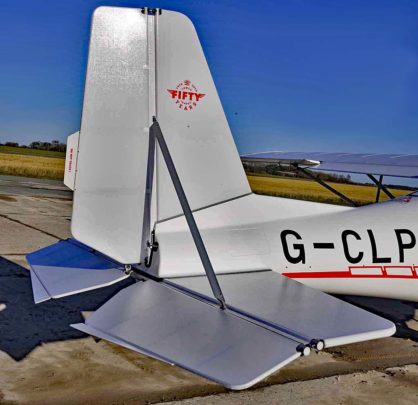 Less obvious changes include a significant revision of the wing structure with more use of carbon fiber. C42C's cockpit roof has been completely redesigned and the doors are now hung on redesigned hinges.
A sturdy hydro-pneumatic tricycle undercarriage offers nosewheel steering via the rudder pedals and carries
Less obvious changes include a significant revision of the wing structure with more use of carbon fiber. C42C's cockpit roof has been completely redesigned and the doors are now hung on redesigned hinges.
A sturdy hydro-pneumatic tricycle undercarriage offers nosewheel steering via the rudder pedals and carries 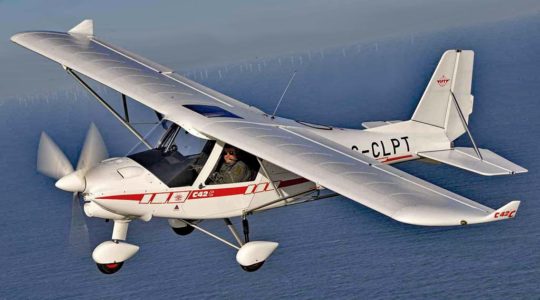 After fastening my four-point harness, I raised the throttle into its correct position and familiarized myself with the cockpit. Throttles on both sides fold flat to aid ingress and egress.
C42C's instrument panel is large and could easily carry just about every possible permutation of instrumentation, from very basic analog to the latest
After fastening my four-point harness, I raised the throttle into its correct position and familiarized myself with the cockpit. Throttles on both sides fold flat to aid ingress and egress.
C42C's instrument panel is large and could easily carry just about every possible permutation of instrumentation, from very basic analog to the latest 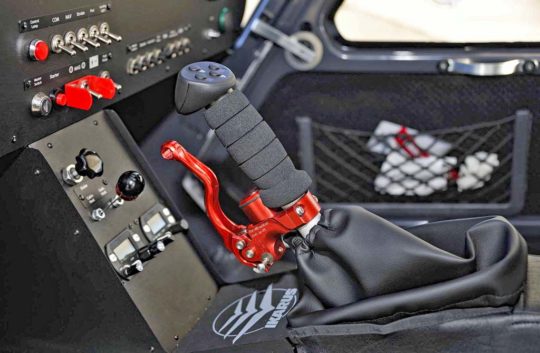 A central column braces the instrument panel and carries push/pull plungers for the choke; cabin heat and carb heat; a transceiver and transponder; and a toggle switch for the intercom. C42C's fuel selector is located at the base of the central column by the pilot’s right leg; easy to see and reach. Large map pockets are built into the doors.
A center stick features a comfortable foam grip with buttons for electric elevator trim and a bicycle-type brake lever with integral park brake. The large handbrake-type flap lever is set into the roof, in front of a red T-handle for the BRS.
A central column braces the instrument panel and carries push/pull plungers for the choke; cabin heat and carb heat; a transceiver and transponder; and a toggle switch for the intercom. C42C's fuel selector is located at the base of the central column by the pilot’s right leg; easy to see and reach. Large map pockets are built into the doors.
A center stick features a comfortable foam grip with buttons for electric elevator trim and a bicycle-type brake lever with integral park brake. The large handbrake-type flap lever is set into the roof, in front of a red T-handle for the BRS.
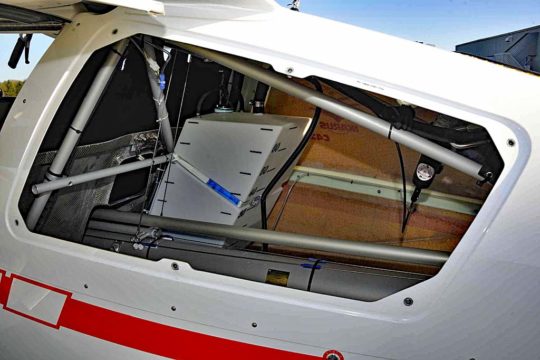 With my solo loaded weight about 200 pounds below gross, a paved runway, and a brisk headwind, I anticipated a stellar take off and climb characteristics and I was not disappointed! The prop was pitched for cruise but you’d never guess. I reached 1,000 feet above the runway before the airfield boundary.
After shooting the air-to-air photos, the camera ship departed and I took a look at C42C's general handling. All controls were nicely harmonized and authoritative. The roll rate in particular is much more sprightly than the C42A, while the stick forces felt lower than I remembered, no doubt due to the spades mounted on the ailerons. A short center stick does not provide much mechanical advantage but the spades help. Control around both pitch and yaw axes was equally effective, and keeping the slip-ball centered took only small amounts of rudder. The electric pitch trim is effective and nicely geared.
With my solo loaded weight about 200 pounds below gross, a paved runway, and a brisk headwind, I anticipated a stellar take off and climb characteristics and I was not disappointed! The prop was pitched for cruise but you’d never guess. I reached 1,000 feet above the runway before the airfield boundary.
After shooting the air-to-air photos, the camera ship departed and I took a look at C42C's general handling. All controls were nicely harmonized and authoritative. The roll rate in particular is much more sprightly than the C42A, while the stick forces felt lower than I remembered, no doubt due to the spades mounted on the ailerons. A short center stick does not provide much mechanical advantage but the spades help. Control around both pitch and yaw axes was equally effective, and keeping the slip-ball centered took only small amounts of rudder. The electric pitch trim is effective and nicely geared.
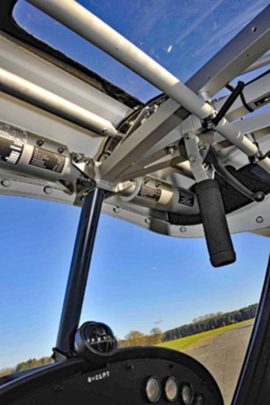 Moving onto an examination of the stick-free stability around all three axes reveals the directional stability is definitely soft to the left and neutral to the right, while spiral stability is slightly positive from the right and neutral to the left. The longitudinal stability is quite strong; a 10-knot displacement from a trimmed speed of 70 knots resulting in a long wavelength low amplitude phugoid that damped itself out after three lazy oscillations. Importantly, C42C is not divergent around any axes.
Slowing down to explore the slow speed side of the flight envelope revealed no unpleasant traits. As the speed reduced past 60 knots, I moved the flap lever to +2, which lowers the flaps to their maximum of 40° and causes a significant change in pitch trim, although this is easily trimmed out.
With full flaps and a reasonable amount of power C42C showed no desire to stall. At modest stall entry and with the nose just above the horizon, C42C mushed and wallowed while the sink rate increased. No stall warning is provided but you feel a mild aerodynamic buffet. Hold the stick on the backstop and it hunts slightly in pitch while sinking. Adequate aileron control is available post-stall.
When I used a more aggressive technique C42C stalled with a slight wing drop. At test weight, the wing drop came around 32 knots. Performing a departure stall I retracted flaps to the take-off setting of +1 (15°), opened the throttle and pitched up …and up …and up! It feels as if I’m lying on my back before the wing finally gives up and the nose falls through.
Moving onto an examination of the stick-free stability around all three axes reveals the directional stability is definitely soft to the left and neutral to the right, while spiral stability is slightly positive from the right and neutral to the left. The longitudinal stability is quite strong; a 10-knot displacement from a trimmed speed of 70 knots resulting in a long wavelength low amplitude phugoid that damped itself out after three lazy oscillations. Importantly, C42C is not divergent around any axes.
Slowing down to explore the slow speed side of the flight envelope revealed no unpleasant traits. As the speed reduced past 60 knots, I moved the flap lever to +2, which lowers the flaps to their maximum of 40° and causes a significant change in pitch trim, although this is easily trimmed out.
With full flaps and a reasonable amount of power C42C showed no desire to stall. At modest stall entry and with the nose just above the horizon, C42C mushed and wallowed while the sink rate increased. No stall warning is provided but you feel a mild aerodynamic buffet. Hold the stick on the backstop and it hunts slightly in pitch while sinking. Adequate aileron control is available post-stall.
When I used a more aggressive technique C42C stalled with a slight wing drop. At test weight, the wing drop came around 32 knots. Performing a departure stall I retracted flaps to the take-off setting of +1 (15°), opened the throttle and pitched up …and up …and up! It feels as if I’m lying on my back before the wing finally gives up and the nose falls through.
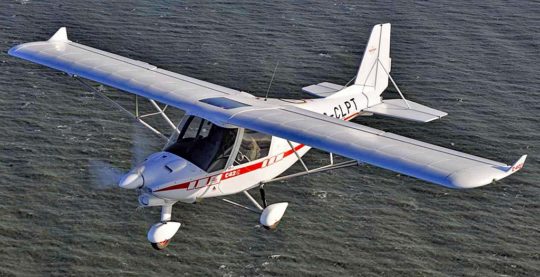 Comco Ikarus reports a glide angle of 11:1 (a Cessna 150 is about 9.5:1), while minimum sink rate is around 400 feet per minute.
As I’d anticipated, this C42 is considerably quicker than the earlier models, and because the air is as smooth as glass I was relaxed as the ASI needle slipped into the yellow arc. C42C was still accelerating at 5000 rpm. Top-of-the-green arc is 82 knots at 2,000 feet and 4800 rpm. At about four gallons per hour, you can comfortably plan for 300 nautical miles with a 30-minute reserve. That’s about 25 nautical air miles per gallon.
As I got back to base, I did a few take offs and landing, and for the first time I found the roof-mounted flap lever slightly intrusive; you’re constantly swapping hands. It’s not a big deal, but writers have to complain about something.
Comco Ikarus reports a glide angle of 11:1 (a Cessna 150 is about 9.5:1), while minimum sink rate is around 400 feet per minute.
As I’d anticipated, this C42 is considerably quicker than the earlier models, and because the air is as smooth as glass I was relaxed as the ASI needle slipped into the yellow arc. C42C was still accelerating at 5000 rpm. Top-of-the-green arc is 82 knots at 2,000 feet and 4800 rpm. At about four gallons per hour, you can comfortably plan for 300 nautical miles with a 30-minute reserve. That’s about 25 nautical air miles per gallon.
As I got back to base, I did a few take offs and landing, and for the first time I found the roof-mounted flap lever slightly intrusive; you’re constantly swapping hands. It’s not a big deal, but writers have to complain about something.

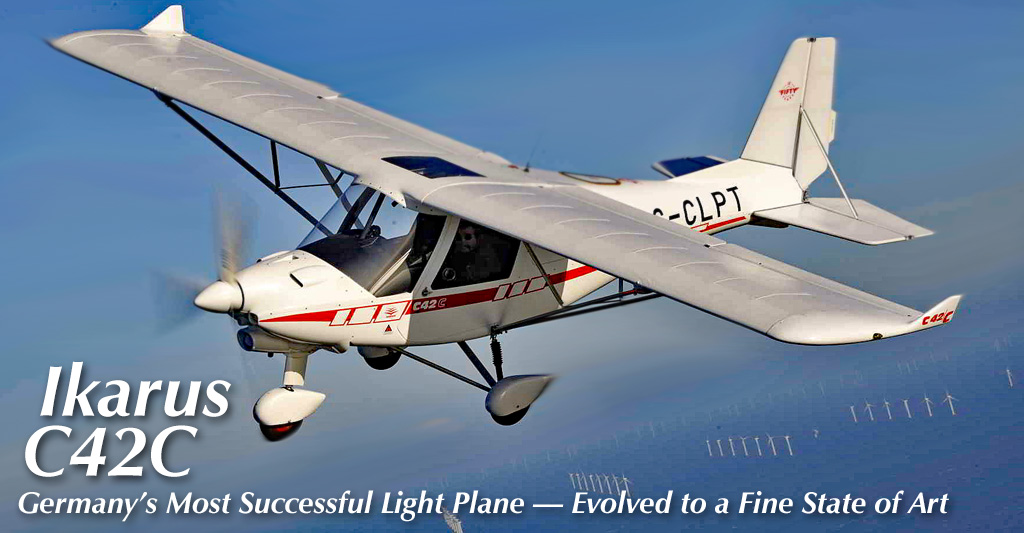
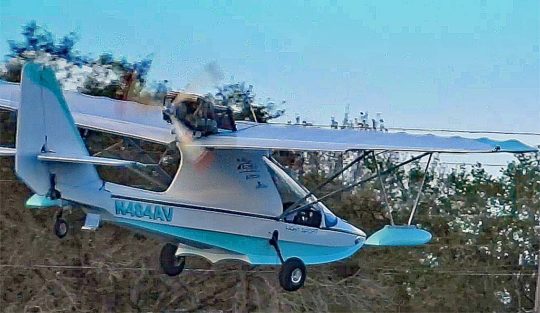
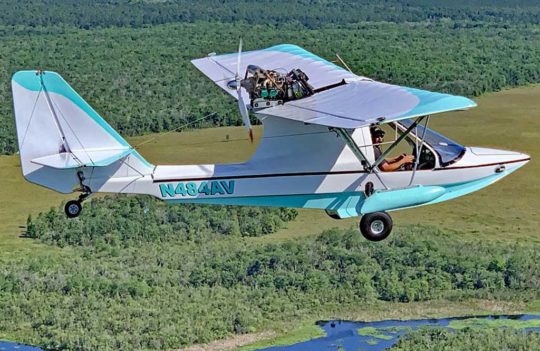 Consider this. Even today, in 2021, you can buy a complete Aventura kit for something north of $50,000. While that will be a basic machine and while you'll spend hours building it — an activity many find highly satisfying — you must put that pricing in perspective.
Go online and look for a seaplane, any seaplane you can find. First, you won't find many as demand for amphibian versatility has remained strong for decades. Second, even a worn-out legacy GA airplane with an engine approaching overhaul mounted on rather banged-up floats will cost dramatically more than the same airplane on wheels. Really! Go look for yourself; I'll wait.
Consider this. Even today, in 2021, you can buy a complete Aventura kit for something north of $50,000. While that will be a basic machine and while you'll spend hours building it — an activity many find highly satisfying — you must put that pricing in perspective.
Go online and look for a seaplane, any seaplane you can find. First, you won't find many as demand for amphibian versatility has remained strong for decades. Second, even a worn-out legacy GA airplane with an engine approaching overhaul mounted on rather banged-up floats will cost dramatically more than the same airplane on wheels. Really! Go look for yourself; I'll wait.
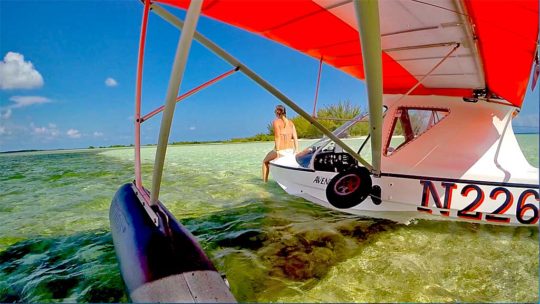 Indeed, the most basic kit Aventura can cost little more than fifty grand — for the whole aircraft, engine, boat hull, everything — where floats alone for a Cessna 172, for example, may cost the same.
Of course, a fully-built Light-Sport Aircraft meeting all FAA acceptance requirements will cost more. Aero Adventure — as with every other company selling a Special LSA — must …provide full part tracking in perpetuity …keep all customer records and be prepared to contact them if any safety actions are required …keep many parts separated from components for non-FAA-accepted aircraft (kits), keep up with ASTM standards and assure continuous operational safety monitoring …maintain factory "best practices" involving such detail as a written log of torque-wrench calibrations …and take many other actions intended to ensure these "sanctioned" aircraft remain airworthy machines for their owners. If you think all this is easy, you don't understand the task.
Indeed, the most basic kit Aventura can cost little more than fifty grand — for the whole aircraft, engine, boat hull, everything — where floats alone for a Cessna 172, for example, may cost the same.
Of course, a fully-built Light-Sport Aircraft meeting all FAA acceptance requirements will cost more. Aero Adventure — as with every other company selling a Special LSA — must …provide full part tracking in perpetuity …keep all customer records and be prepared to contact them if any safety actions are required …keep many parts separated from components for non-FAA-accepted aircraft (kits), keep up with ASTM standards and assure continuous operational safety monitoring …maintain factory "best practices" involving such detail as a written log of torque-wrench calibrations …and take many other actions intended to ensure these "sanctioned" aircraft remain airworthy machines for their owners. If you think all this is easy, you don't understand the task.
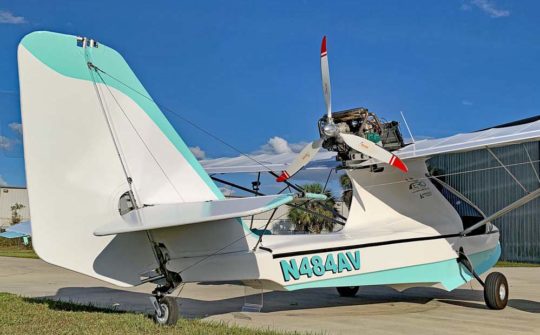 All that monitoring and mandatory activity costs money and will be reflected in Aventura SLSA's selling price. However, I'm willing to bet you lunch at my favorite restaurant that this will still be the most reasonably priced aircraft among seaplanes. Care to take the bet?
Aventura SLSA will be offered for sale for the first time at the upcoming
All that monitoring and mandatory activity costs money and will be reflected in Aventura SLSA's selling price. However, I'm willing to bet you lunch at my favorite restaurant that this will still be the most reasonably priced aircraft among seaplanes. Care to take the bet?
Aventura SLSA will be offered for sale for the first time at the upcoming 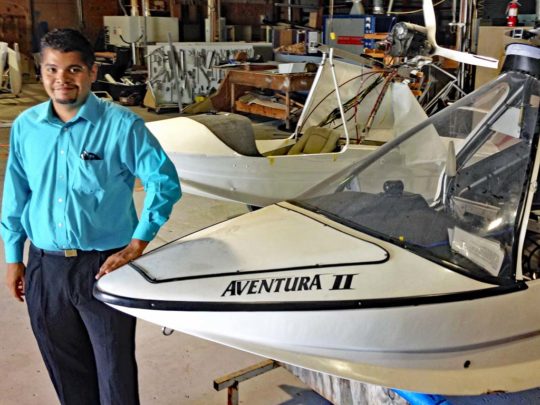
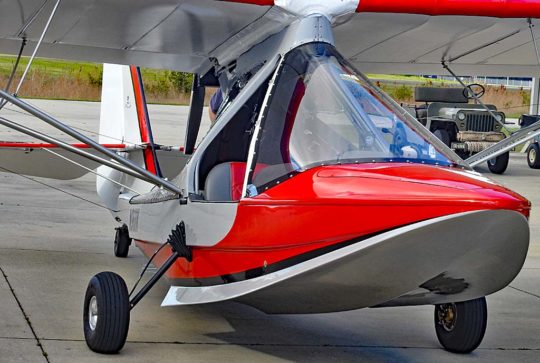
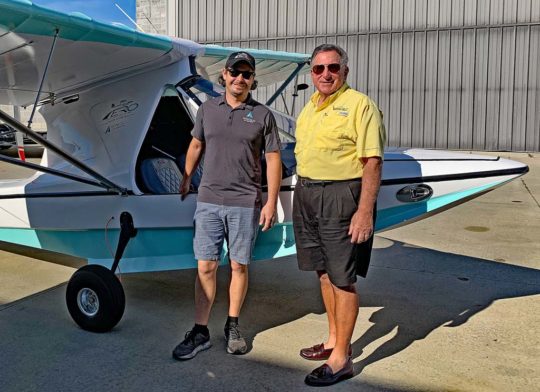
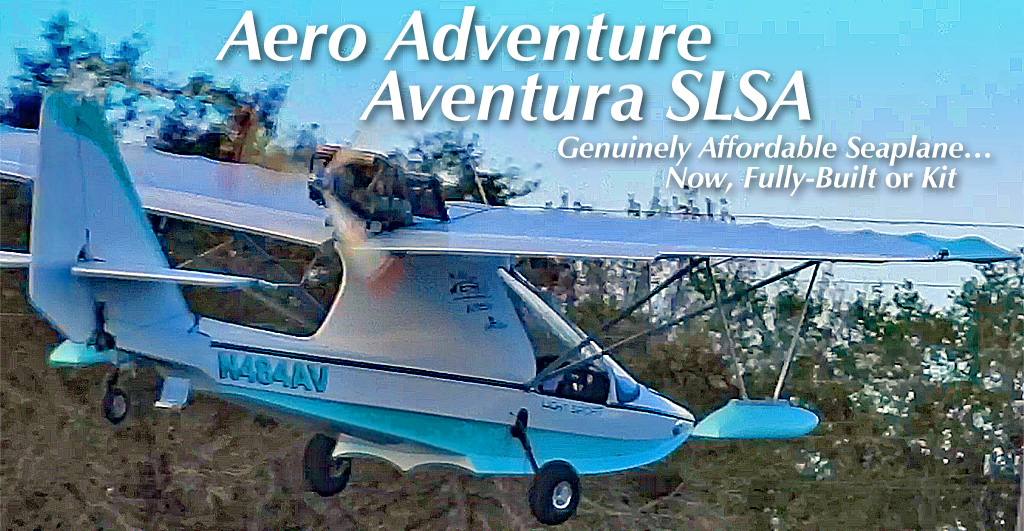
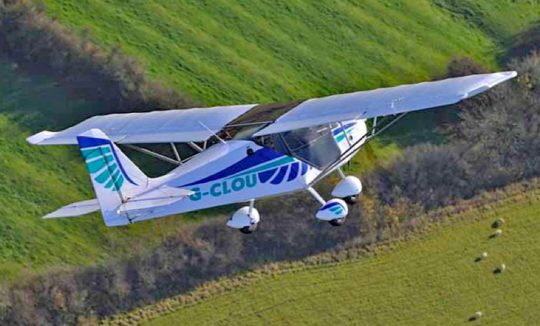 For far too long, the more bigoted aviators among us considered such an aircraft to be little more an overweight hang glider powered by a second-hand lawn mower engine and barely capable of flying fast enough to kill you. Noisy, slow, and smelly — they were considerably less than satisfactory. However, times change and this class of flying machine has changed more than most.
Designed by Frenchman Phillippe Prevot in the early '90s, the original Skyranger was an object lesson in KISS (Keep It Simple, Stupid). Prevot’s intent was that anyone competent with basic tools could build it, as there was no bending, composites, or welding involved. It was to be covered in an equally simple material, Dacron sailcloth.
Easy to build, maintain and fly, more than 1,600 have been produced; nearly 300 are registered in England alone. Beside numerous minor improvements, fundamentally Skyranger has changed little: the ventral fin has been replaced by a taller fin and the wingspan has been reduced.
For far too long, the more bigoted aviators among us considered such an aircraft to be little more an overweight hang glider powered by a second-hand lawn mower engine and barely capable of flying fast enough to kill you. Noisy, slow, and smelly — they were considerably less than satisfactory. However, times change and this class of flying machine has changed more than most.
Designed by Frenchman Phillippe Prevot in the early '90s, the original Skyranger was an object lesson in KISS (Keep It Simple, Stupid). Prevot’s intent was that anyone competent with basic tools could build it, as there was no bending, composites, or welding involved. It was to be covered in an equally simple material, Dacron sailcloth.
Easy to build, maintain and fly, more than 1,600 have been produced; nearly 300 are registered in England alone. Beside numerous minor improvements, fundamentally Skyranger has changed little: the ventral fin has been replaced by a taller fin and the wingspan has been reduced.
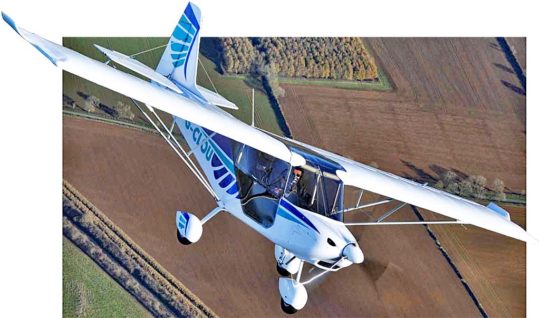 Flylight's main subcontractor is Aeros, based in Kiev, Ukraine. Aeros make some of the world's best hang gliders; they are experts in tube and fabric work. They've built Skyrangers for many years. Today, Nynjas are assembled in the UK.
Nynja's airframe is constructed primarily of straight, pin-jointed, aircraft-grade aluminum tubing, covered with a combination of non-structural composite sheets for the fuselage and pre-sewn polyester Xlam fabric for the wings and tailplane. An interesting feature (and one that flags up how speedy the Nynja is) is that the wings feature foam spacers that ensure the aerofoil retains its shape at higher speeds. All the primary controls are actuated by cables, as is the elevator trim. The tailplane is wire-braced and the strut-braced wings feature upswept winglets. An excellent option allows the wings to be folded back for ease of storage.
Flylight's main subcontractor is Aeros, based in Kiev, Ukraine. Aeros make some of the world's best hang gliders; they are experts in tube and fabric work. They've built Skyrangers for many years. Today, Nynjas are assembled in the UK.
Nynja's airframe is constructed primarily of straight, pin-jointed, aircraft-grade aluminum tubing, covered with a combination of non-structural composite sheets for the fuselage and pre-sewn polyester Xlam fabric for the wings and tailplane. An interesting feature (and one that flags up how speedy the Nynja is) is that the wings feature foam spacers that ensure the aerofoil retains its shape at higher speeds. All the primary controls are actuated by cables, as is the elevator trim. The tailplane is wire-braced and the strut-braced wings feature upswept winglets. An excellent option allows the wings to be folded back for ease of storage.
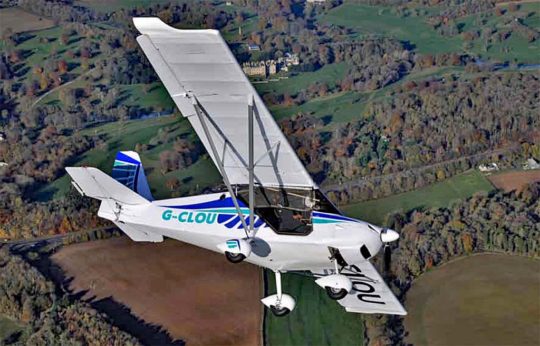 Earlier Skyrangers were powered by several different engines, including the Jabiru 2200, HKS and BMW R100, but these days the
Earlier Skyrangers were powered by several different engines, including the Jabiru 2200, HKS and BMW R100, but these days the 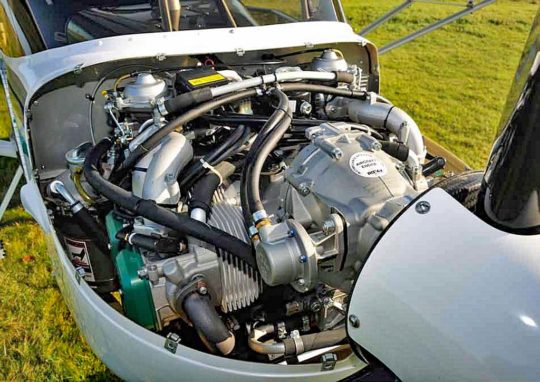 All three wheels feature snug fitting wheel pants. Nynja's main gear is supported by aluminium "half springs" bolted to a steel center tube and feature hydraulic
All three wheels feature snug fitting wheel pants. Nynja's main gear is supported by aluminium "half springs" bolted to a steel center tube and feature hydraulic 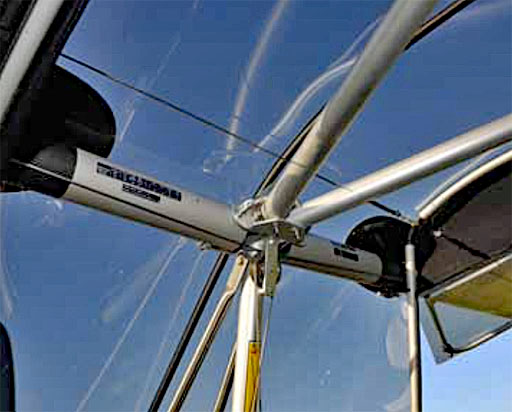
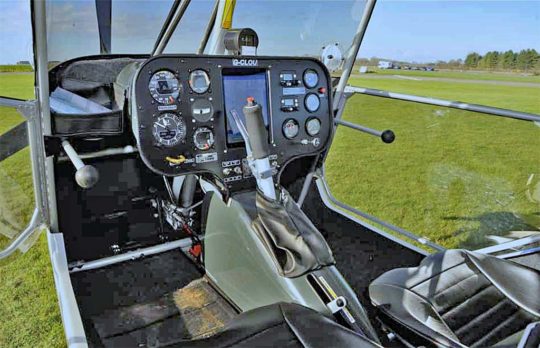 Rolling out onto the runway I opened the Rotax up to full power. With 13 gallons of fuel on board Nynja was right on the 992-pound gross weight. It was cool and I checked a slight crosswind from starboard.
With a power-to-weight ratio of less than ten pounds per horsepower, acceleration was excellent and after what seemed a ridiculously short ground roll, the Nynja literally leapt off the runway and clawed itself skyward at an impressively steep angle. With the VSI indicating in excess of 1,200 fpm and a relatively low forward speed of only 62 knots, we crossed the airfield boundary already at more than 1,000 feet. At such an aggressive climb, Nynja's nose was quite pitched up, greatly reducing the field of view, but even lowering it to more a cruise-climb attitude still produced about 700 feet per minute of climb at 80 knots and 5,000 rpm.
With light weight, plenty of power, and crisp controls joining up with Al and Keith in the EuroFox cameraship was easy; collecting the pictures in this article didn’t take long.
Rolling out onto the runway I opened the Rotax up to full power. With 13 gallons of fuel on board Nynja was right on the 992-pound gross weight. It was cool and I checked a slight crosswind from starboard.
With a power-to-weight ratio of less than ten pounds per horsepower, acceleration was excellent and after what seemed a ridiculously short ground roll, the Nynja literally leapt off the runway and clawed itself skyward at an impressively steep angle. With the VSI indicating in excess of 1,200 fpm and a relatively low forward speed of only 62 knots, we crossed the airfield boundary already at more than 1,000 feet. At such an aggressive climb, Nynja's nose was quite pitched up, greatly reducing the field of view, but even lowering it to more a cruise-climb attitude still produced about 700 feet per minute of climb at 80 knots and 5,000 rpm.
With light weight, plenty of power, and crisp controls joining up with Al and Keith in the EuroFox cameraship was easy; collecting the pictures in this article didn’t take long.
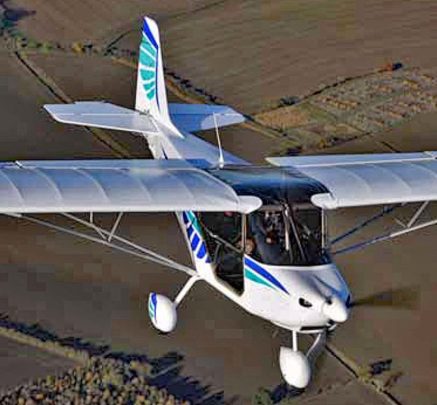 For a high wing aircraft, the visibility is quite good, although as is a feature of practically all-high wing aircraft, it is a tiny bit blind in the turn. Another nice touch is the transparent panel in the roof, as if the aircraft is rolled into a very tight turn it is possible to look through the roof. The controls all seemed quite nicely harmonised and authoritative. The roll rate in particular is distinctly sprightly, while both pitch and yaw control were equally effective. Trim is effective.
Moving on to an exploration of the stick-free stability around all three axes, I get the impression the Nynja is strongly positive longitudinally, weakly positive directionally, and neutral laterally.
Slowing down to explore the low speed side of the flight envelope revealed no disagreeable mannerisms. Indeed, with flaps down and carrying a reasonable amount of power the Nynja showed no desire to stall at all, but a more vigorous approach to the stall with the engine off produced a more positive break at about 33 knots, combined with a slight wing drop which was easily controlled by the rudder. I increase power for a look at a departure stall and, as expected, this maneuver provoked a slightly more vigorous response, although the ensuing stall was easily recovered from with minimal height loss. Flaps up, the stall is still less than 40.
For a high wing aircraft, the visibility is quite good, although as is a feature of practically all-high wing aircraft, it is a tiny bit blind in the turn. Another nice touch is the transparent panel in the roof, as if the aircraft is rolled into a very tight turn it is possible to look through the roof. The controls all seemed quite nicely harmonised and authoritative. The roll rate in particular is distinctly sprightly, while both pitch and yaw control were equally effective. Trim is effective.
Moving on to an exploration of the stick-free stability around all three axes, I get the impression the Nynja is strongly positive longitudinally, weakly positive directionally, and neutral laterally.
Slowing down to explore the low speed side of the flight envelope revealed no disagreeable mannerisms. Indeed, with flaps down and carrying a reasonable amount of power the Nynja showed no desire to stall at all, but a more vigorous approach to the stall with the engine off produced a more positive break at about 33 knots, combined with a slight wing drop which was easily controlled by the rudder. I increase power for a look at a departure stall and, as expected, this maneuver provoked a slightly more vigorous response, although the ensuing stall was easily recovered from with minimal height loss. Flaps up, the stall is still less than 40.
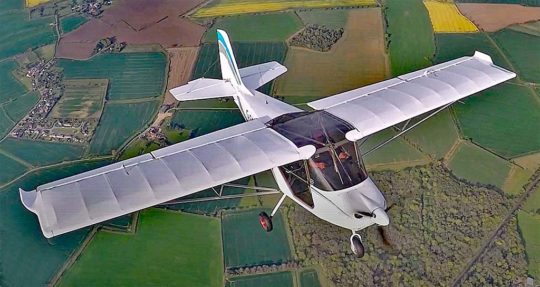 The claimed glide angle is a reasonable 9:1 at 55 knots, while minimum sink is modest at around 500 feet per minute at 45 knots.
Cruise is middle-of-the-range at 95 knots, achieved at 5,100 rpm, giving a true air speed of 101 knots at 3,000 feet with a fuel flow of about 4.75 gallons per hour, but the engine does sound somewhat frenetic. A much more comfortable cruise rpm is 4,000, which still gives an IAS of 70 knots (76 true) and a fuel flow of less than 2.6 gallons per hour and a still-air range of over 400 nautical miles, including Day-VFR reserves.
The claimed glide angle is a reasonable 9:1 at 55 knots, while minimum sink is modest at around 500 feet per minute at 45 knots.
Cruise is middle-of-the-range at 95 knots, achieved at 5,100 rpm, giving a true air speed of 101 knots at 3,000 feet with a fuel flow of about 4.75 gallons per hour, but the engine does sound somewhat frenetic. A much more comfortable cruise rpm is 4,000, which still gives an IAS of 70 knots (76 true) and a fuel flow of less than 2.6 gallons per hour and a still-air range of over 400 nautical miles, including Day-VFR reserves.
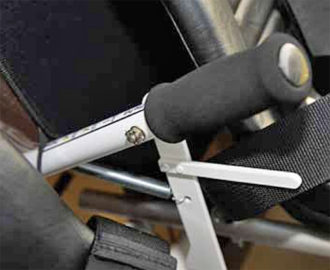 On approach to landing, I nailed the ASI’s needle to 50 with just a smidgen of throttle and then chopped the power. After Nynja's main wheels touched firmly I lowered the nose and applied maximum braking; I actually locked the wheels up and we skidded momentarily on the damp grass. All total I used a little over 300 feet.
Overall, I thought the Nynja a great little aircraft that offers outstanding value for money. It is a lot of aircraft for the money.
What a cracking little aircraft! Fast, frugal and fun, the latest iteration of the seminal Skyranger might just be the best one yet.
On approach to landing, I nailed the ASI’s needle to 50 with just a smidgen of throttle and then chopped the power. After Nynja's main wheels touched firmly I lowered the nose and applied maximum braking; I actually locked the wheels up and we skidded momentarily on the damp grass. All total I used a little over 300 feet.
Overall, I thought the Nynja a great little aircraft that offers outstanding value for money. It is a lot of aircraft for the money.
What a cracking little aircraft! Fast, frugal and fun, the latest iteration of the seminal Skyranger might just be the best one yet.
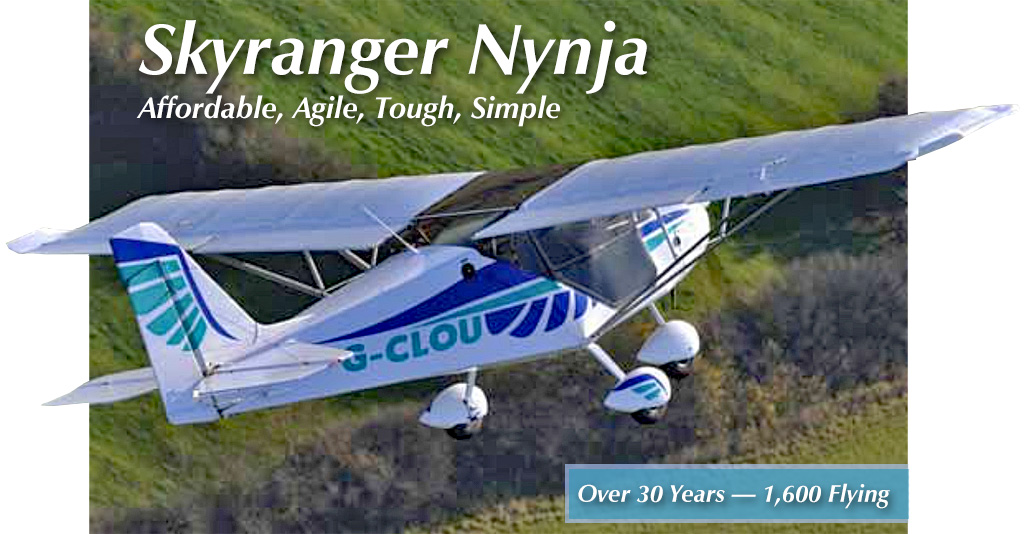
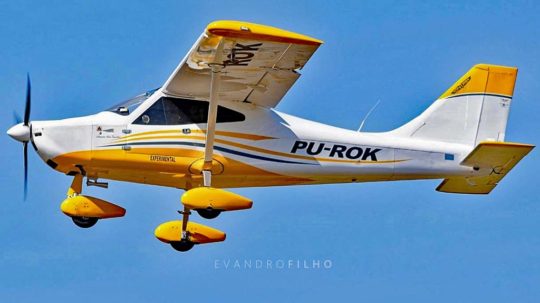 In a way, you already know this aircraft or at least its look-a-like predecessor, Paradise's P1NG. As happens in every industry, a key engineer left a family airplane building business — Paradise, run by granddad, Noe de Oliveira — and started his own aircraft factory. The departure occurred eight years ago.
Now, Bruno de Oliveira has won FAA acceptance of his Special LSA model. Brazil uses ASTM standards as well so he also got approval in the South American country.
Importer Ed Ricks of
In a way, you already know this aircraft or at least its look-a-like predecessor, Paradise's P1NG. As happens in every industry, a key engineer left a family airplane building business — Paradise, run by granddad, Noe de Oliveira — and started his own aircraft factory. The departure occurred eight years ago.
Now, Bruno de Oliveira has won FAA acceptance of his Special LSA model. Brazil uses ASTM standards as well so he also got approval in the South American country.
Importer Ed Ricks of 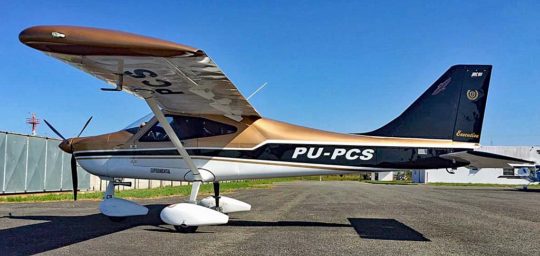 With his MC01, Bruno and Montaer are filling a void.
Both models veered away from the uber-common joystick seen on most Light-Sport Aircraft. Yet yoke control has a large global following as Cessna, Piper, Beech, Mooney, and more all use yokes. Since those brands trained most Yankee pilots, it makes sense to offer them a control already familiar to so many pilots.
With his MC01, Bruno and Montaer are filling a void.
Both models veered away from the uber-common joystick seen on most Light-Sport Aircraft. Yet yoke control has a large global following as Cessna, Piper, Beech, Mooney, and more all use yokes. Since those brands trained most Yankee pilots, it makes sense to offer them a control already familiar to so many pilots.
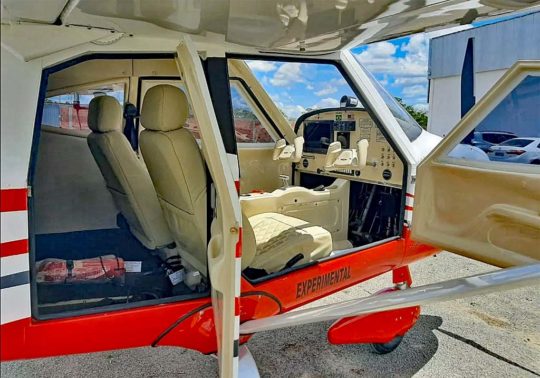 MC01 also continues with a very popular feature: a voluminous baggage area accessed by a third door.
MC01 also continues with a very popular feature: a voluminous baggage area accessed by a third door. 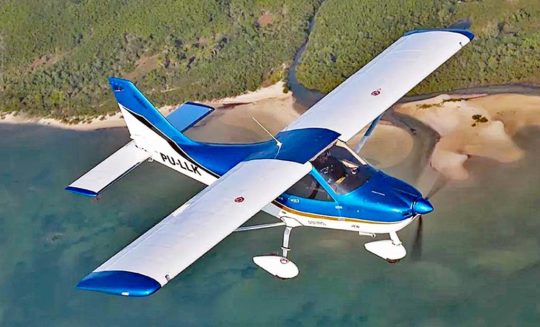 The very first U.S. delivery of MC01 is headed to Wisconsin where a pilot has ordered one with a very special extra: hand controls, a choice available to offer assistance to some pilots. That airplane is due to leave Brazil in March and may be seen at EAA's big summer show.
MC01’s airframe is built using 4130 molybdenum steel tube (photo) providing a proven safety to the occupants. The exterior is all aeronautical aluminum fuselage and wings. A steerable nose wheel, dual toe brakes, and control yokes are just some of the features of this well built airplane.
The very first U.S. delivery of MC01 is headed to Wisconsin where a pilot has ordered one with a very special extra: hand controls, a choice available to offer assistance to some pilots. That airplane is due to leave Brazil in March and may be seen at EAA's big summer show.
MC01’s airframe is built using 4130 molybdenum steel tube (photo) providing a proven safety to the occupants. The exterior is all aeronautical aluminum fuselage and wings. A steerable nose wheel, dual toe brakes, and control yokes are just some of the features of this well built airplane.
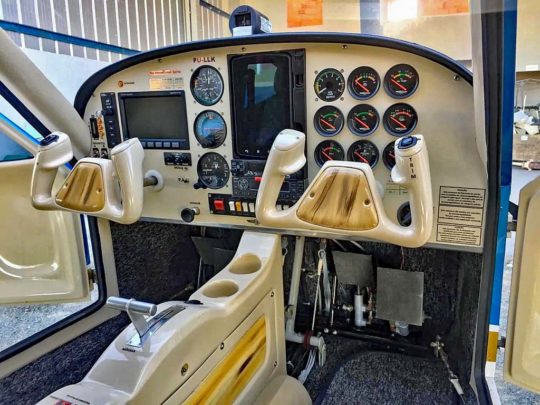
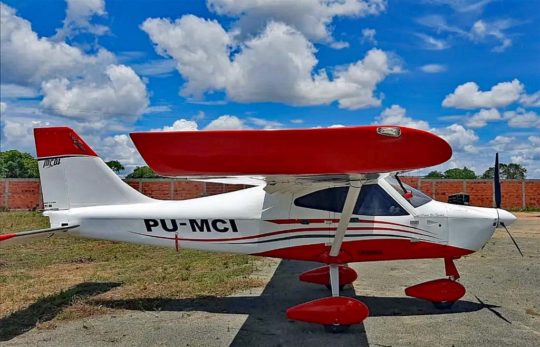 Ed has known Bruno de Oliveira for eight years and will be in charge of sales in the USA. He is seeking dealers in certain states; if this interests you or if you want more details before Sun 'n Fun, call Ed at 623-695-9040 or
Ed has known Bruno de Oliveira for eight years and will be in charge of sales in the USA. He is seeking dealers in certain states; if this interests you or if you want more details before Sun 'n Fun, call Ed at 623-695-9040 or 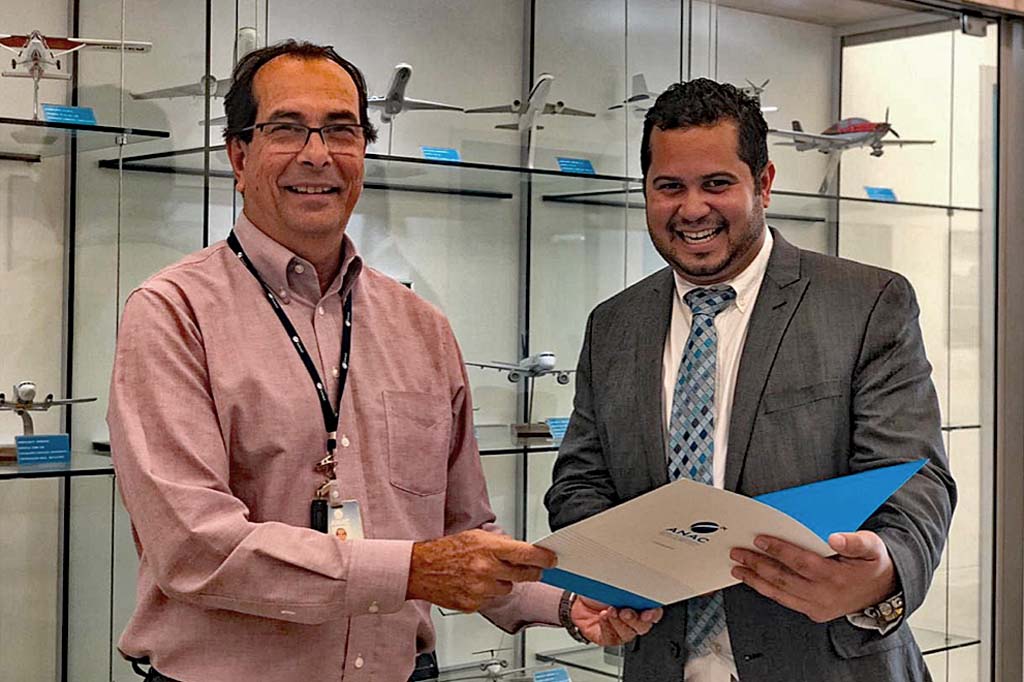
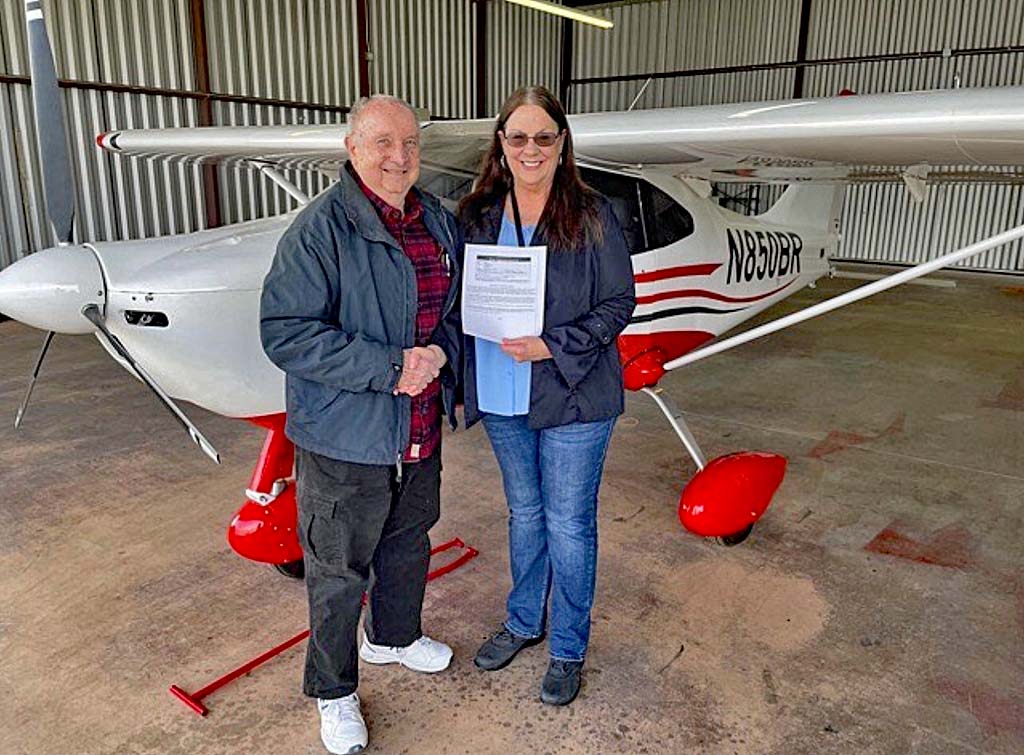
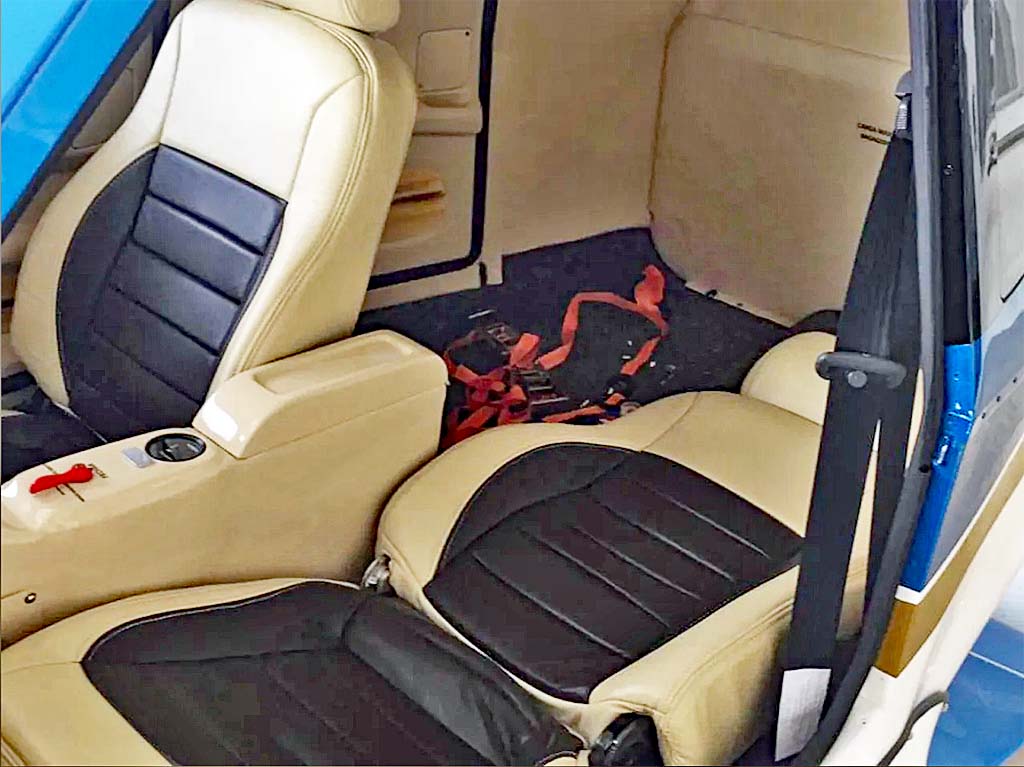
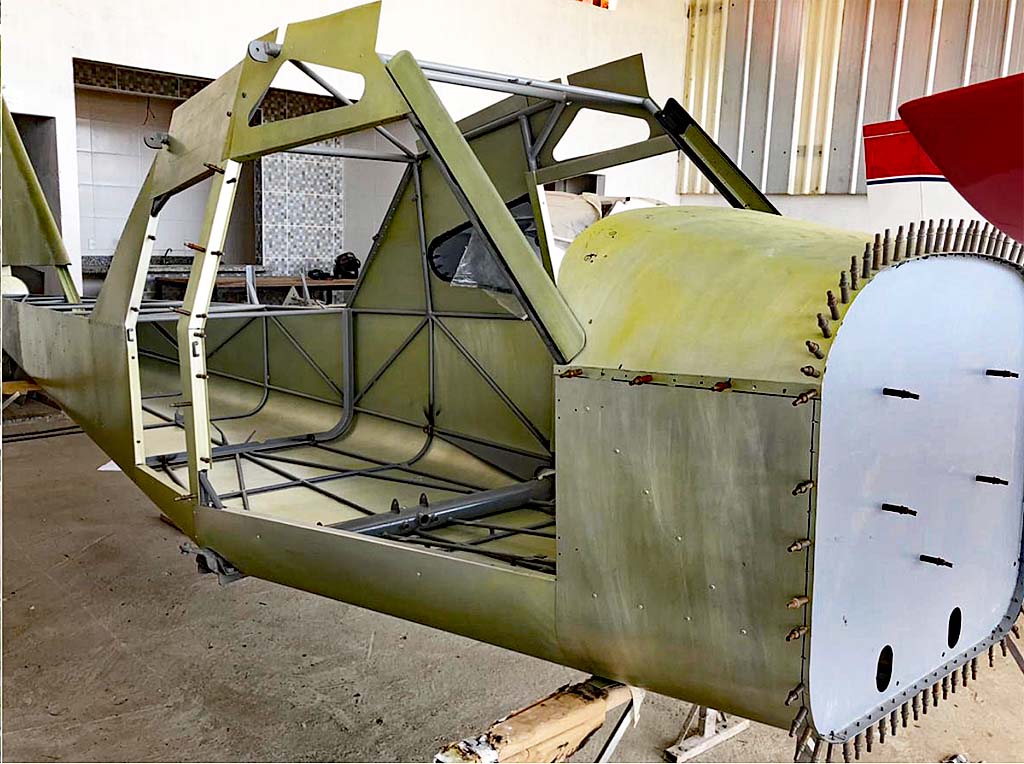
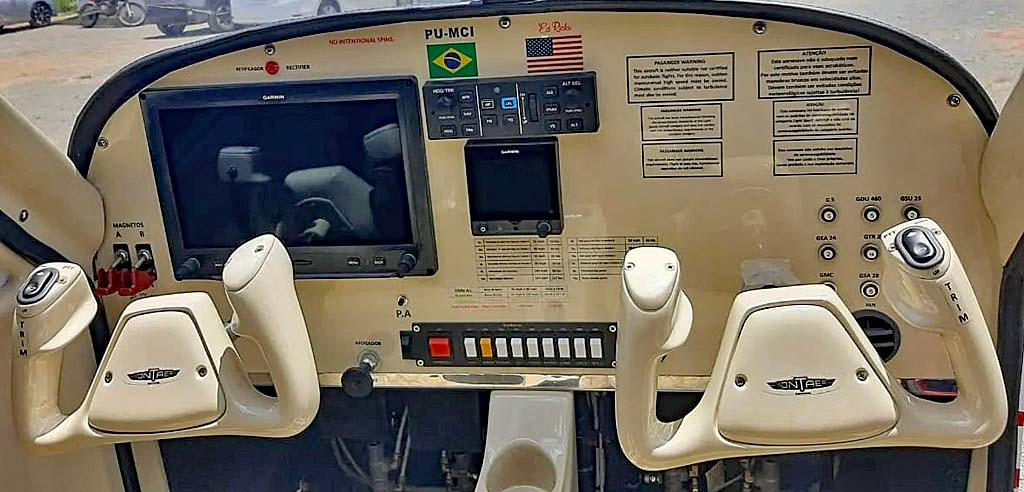
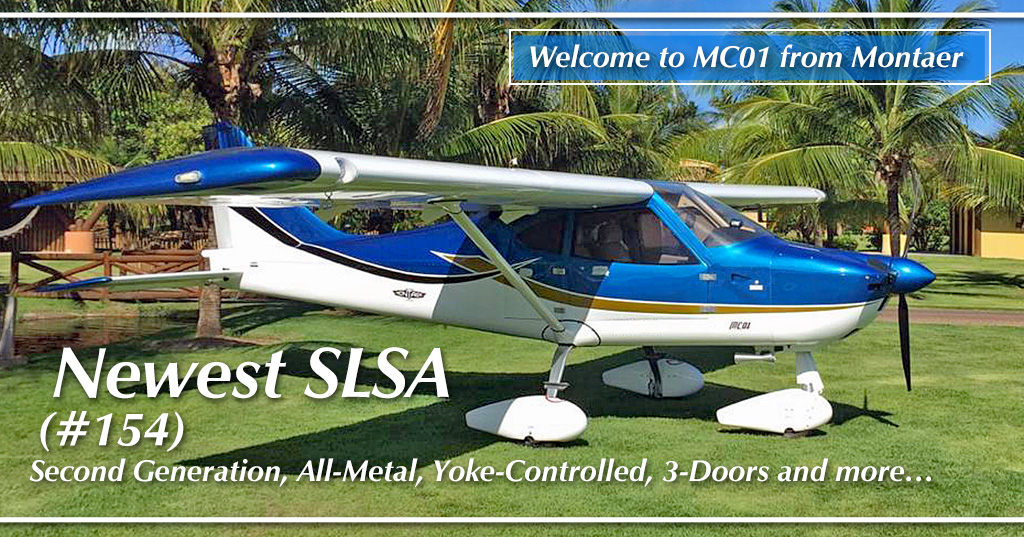
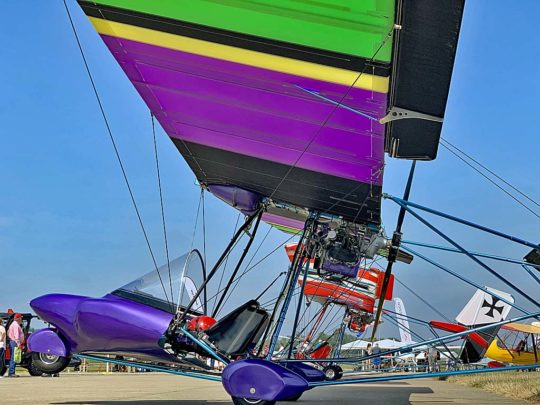 Those who attempted to copy and duplicate Quicksilvers have mostly faded away but some enterprises (see at bottom) built a business out of supplying parts and components that Quicksilver itself never offered.
One of the most successful of these is
Those who attempted to copy and duplicate Quicksilvers have mostly faded away but some enterprises (see at bottom) built a business out of supplying parts and components that Quicksilver itself never offered.
One of the most successful of these is 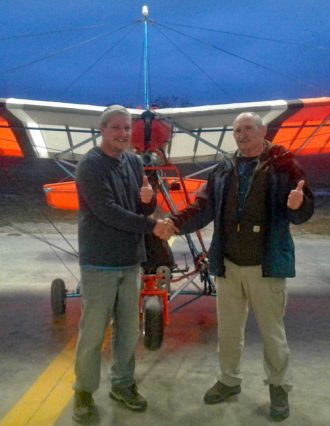
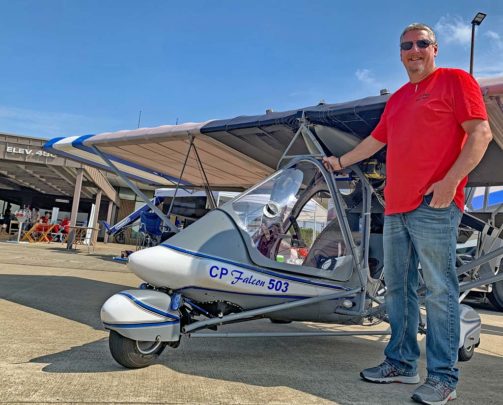 "Now that I think I've got it perfected," Andy expressed, "we're going to start production on this in 2021."
Falcon has a lot of components so it will be more expensive. "Yes," Andy agreed, "it will be a little higher priced aircraft — it takes a lot of time to assemble — but it will fly like a Quicksilver, so those pilots who want to fly faster now have a choice."
A Quicksilver-type design like the standard "Smithsilvers" that Tri-State makes from scratch typically cruise 40-60 mph where Falcon is as much as 50% faster.
"Yes, this will be a little higher-priced aircraft," Andy observed, "and it must be built as an Experimental Amateur Built." Let's put it in perspective, noting that all prices mentioned below are subject to change.
"Now that I think I've got it perfected," Andy expressed, "we're going to start production on this in 2021."
Falcon has a lot of components so it will be more expensive. "Yes," Andy agreed, "it will be a little higher priced aircraft — it takes a lot of time to assemble — but it will fly like a Quicksilver, so those pilots who want to fly faster now have a choice."
A Quicksilver-type design like the standard "Smithsilvers" that Tri-State makes from scratch typically cruise 40-60 mph where Falcon is as much as 50% faster.
"Yes, this will be a little higher-priced aircraft," Andy observed, "and it must be built as an Experimental Amateur Built." Let's put it in perspective, noting that all prices mentioned below are subject to change.
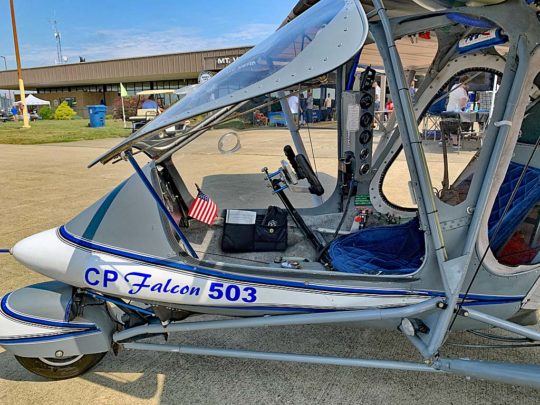 A standard single place Smithsilver by Tri-State Kite Sales assembled for fly away costs about $28,000, said Andy. A two-place with all the extras gets into the high $40,000s and Falcon with a
A standard single place Smithsilver by Tri-State Kite Sales assembled for fly away costs about $28,000, said Andy. A two-place with all the extras gets into the high $40,000s and Falcon with a 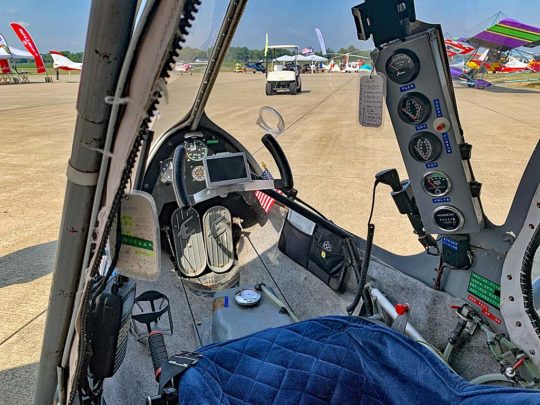 Mark Smith founded the company in the late 1970s and formally organized in 1981. In those 40 years, Tri-State has delivered more than 200 complete aircraft and an uncounted number of aircraft served with replacement parts or Tri-State accessories from fiberglass nose pods to new wing covers and everything in between.
Of all these, Falcon may be the most advanced and sophisticated. It may look like a simple Quicksilver or a Tri-State Smithsilver but Falcon is a step beyond on many ways, for example, creature comforts.
Mark Smith founded the company in the late 1970s and formally organized in 1981. In those 40 years, Tri-State has delivered more than 200 complete aircraft and an uncounted number of aircraft served with replacement parts or Tri-State accessories from fiberglass nose pods to new wing covers and everything in between.
Of all these, Falcon may be the most advanced and sophisticated. It may look like a simple Quicksilver or a Tri-State Smithsilver but Falcon is a step beyond on many ways, for example, creature comforts.
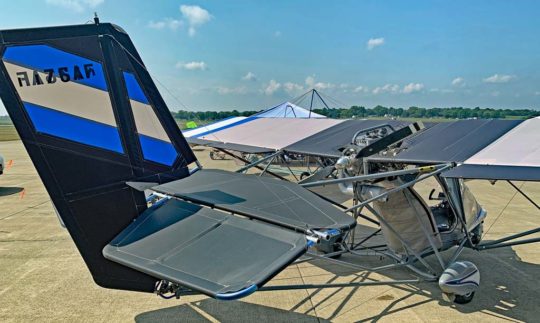 Falcon has a full enclosure, front to back, and even has cabin heat. "I tested this down to 17 degrees ambient temperature, and you can stay about 70 degrees inside the cockpit." While the snow swirls around Tri-State and much of the country, that climate control sounds inviting.
Cross country flying is one of the stated purposes. How fast can Falcon fly?
"I can hit 93 miles an hour," exclaimed Andy, "and cruise is a solid 80 mph." For those unfamiliar with a standard Quicksilver or Smithsilver, that's a substantial increase, more than 20 miles an hour faster on average.
Falcon has a full enclosure, front to back, and even has cabin heat. "I tested this down to 17 degrees ambient temperature, and you can stay about 70 degrees inside the cockpit." While the snow swirls around Tri-State and much of the country, that climate control sounds inviting.
Cross country flying is one of the stated purposes. How fast can Falcon fly?
"I can hit 93 miles an hour," exclaimed Andy, "and cruise is a solid 80 mph." For those unfamiliar with a standard Quicksilver or Smithsilver, that's a substantial increase, more than 20 miles an hour faster on average.
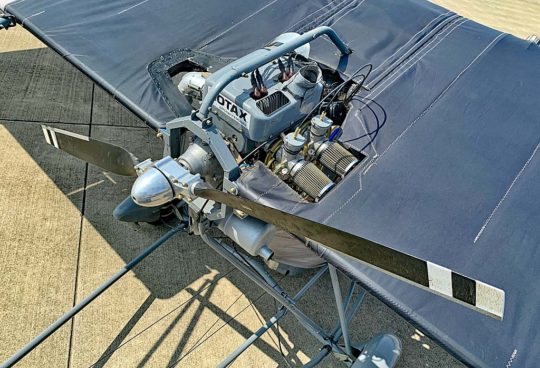 As a nearby image shows, the Rotax 503 engine is nestled down in the aft wing center section because Andy wanted to lower the thrust line to a more neutral position. This means the dual-carb Rotax 503 and its 50 horses push the airplane forwards with less pitch influence, which is a significant part of how it can achieve higher speeds.
"Falcon's standard instrument panel has all your flight information," explained Andy, "while all the engine instrumentation is housed on the right vertical support strut. Above your head are all the electric switches for electric flaps, ignition switches and lighting controls."
As a nearby image shows, the Rotax 503 engine is nestled down in the aft wing center section because Andy wanted to lower the thrust line to a more neutral position. This means the dual-carb Rotax 503 and its 50 horses push the airplane forwards with less pitch influence, which is a significant part of how it can achieve higher speeds.
"Falcon's standard instrument panel has all your flight information," explained Andy, "while all the engine instrumentation is housed on the right vertical support strut. Above your head are all the electric switches for electric flaps, ignition switches and lighting controls."
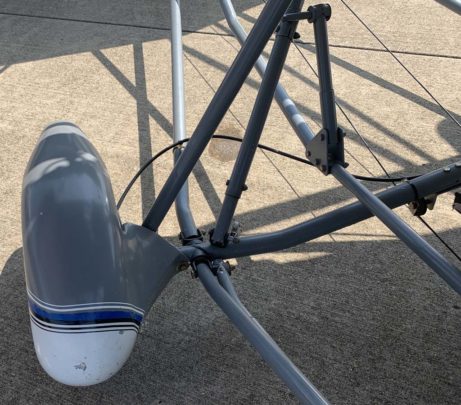 Unlike every Quicksilver or Smithsilver, Falcon has a control yoke as does Quicksilver's GT500 and GT400 models. However, unlike those Quicksilver models, this yoke has been configured specially to make entry much easier.
Falcon has a door that props open but when I looked at, I thought entry looked rather challenging. What I missed were the steps Andy took in designing a yoke that neatly folds out of the way. When so retracted, entering Falcon looks easy.
Once in place you pull the yoke back toward you and it latches securely into position. With details like this, no wonder Any spent years getting Falcon right on paper and three more to get the pieces and parts in the right place.
Falcon's cabin even has a hat rack …or in this case, a headset rack as that's what Andy puts in this location.
Unlike every Quicksilver or Smithsilver, Falcon has a control yoke as does Quicksilver's GT500 and GT400 models. However, unlike those Quicksilver models, this yoke has been configured specially to make entry much easier.
Falcon has a door that props open but when I looked at, I thought entry looked rather challenging. What I missed were the steps Andy took in designing a yoke that neatly folds out of the way. When so retracted, entering Falcon looks easy.
Once in place you pull the yoke back toward you and it latches securely into position. With details like this, no wonder Any spent years getting Falcon right on paper and three more to get the pieces and parts in the right place.
Falcon's cabin even has a hat rack …or in this case, a headset rack as that's what Andy puts in this location.
 Andy referred to the current one as a "nostalgia website" because it holds extensive commentaries written by Mark Smith, the patriarch of Tri-State. His words make a fun, and historic, read but what the vintage website does not do is provide clear navigation to the various aircraft models and component parts or assemblies that Tri-State builds. The new website will address these shortcomings while hopefully keeping all Mark's original musings.
Until the new website is finished, visit
Andy referred to the current one as a "nostalgia website" because it holds extensive commentaries written by Mark Smith, the patriarch of Tri-State. His words make a fun, and historic, read but what the vintage website does not do is provide clear navigation to the various aircraft models and component parts or assemblies that Tri-State builds. The new website will address these shortcomings while hopefully keeping all Mark's original musings.
Until the new website is finished, visit 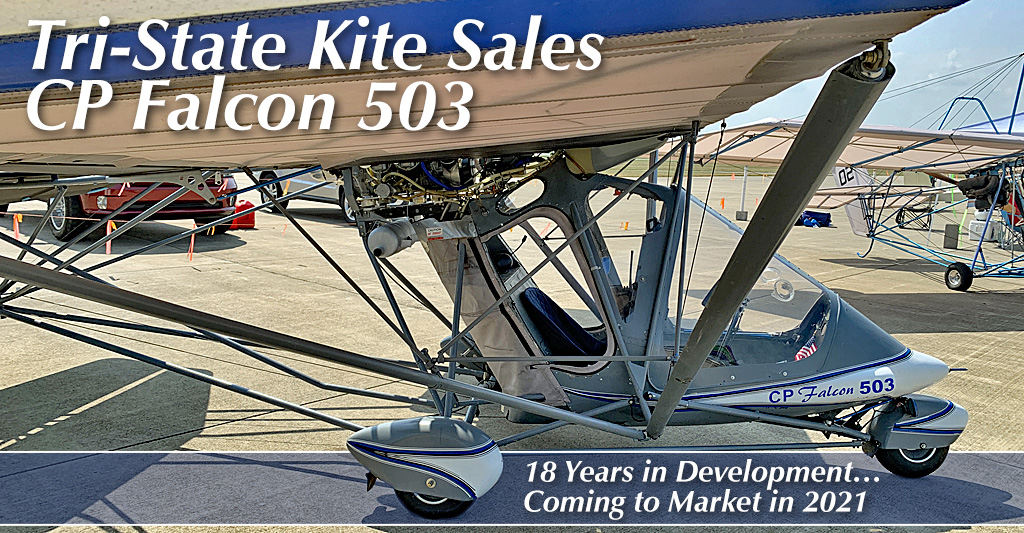
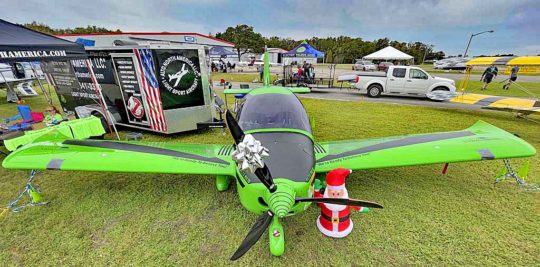 Then, life got more complicated for Ron and he chose to quietly bow out of representing Alto.
However, Czech Republic producer Direct Fly never stopped. Indeed, the company has supplied more than 80 aircraft to dealers in places as close as Europe and as distant as Australia.
Given the deluge of handsome LSA offered to Americans, Alto slipped off the radar for most Yankee pilots but not before Ron demonstrated the design's worthy qualities. Check this
Then, life got more complicated for Ron and he chose to quietly bow out of representing Alto.
However, Czech Republic producer Direct Fly never stopped. Indeed, the company has supplied more than 80 aircraft to dealers in places as close as Europe and as distant as Australia.
Given the deluge of handsome LSA offered to Americans, Alto slipped off the radar for most Yankee pilots but not before Ron demonstrated the design's worthy qualities. Check this 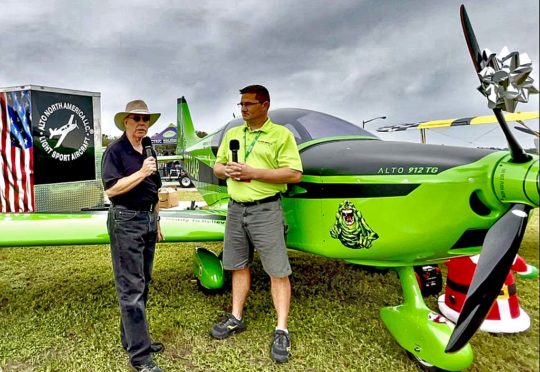
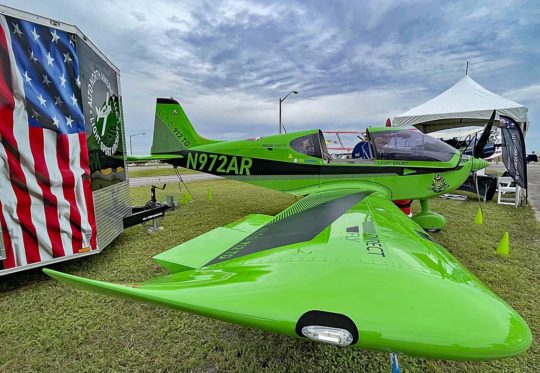 The 2020 version of Alto is equipped with the carbureted 100 horsepower Rotax 912 ULS engine. Standard equipment includes hydraulic brakes, electric flap control, and electric elevator trim. The exterior of the aircraft is painted with a single color plus accents as seen while the interior and the seats are upholstered with skin-friendly cloth.
Czech producer Direct Fly reported, "More than 80 of these all-metal aircraft fly in various countries such as USA, Brazil, South Africa, Spain and many more." Appealing to more than flight school operators, Alto is "especially suitable for recreational flying, mostly thanks to its robust design and predictable flight characteristics," the factory added.
The 2020 version of Alto is equipped with the carbureted 100 horsepower Rotax 912 ULS engine. Standard equipment includes hydraulic brakes, electric flap control, and electric elevator trim. The exterior of the aircraft is painted with a single color plus accents as seen while the interior and the seats are upholstered with skin-friendly cloth.
Czech producer Direct Fly reported, "More than 80 of these all-metal aircraft fly in various countries such as USA, Brazil, South Africa, Spain and many more." Appealing to more than flight school operators, Alto is "especially suitable for recreational flying, mostly thanks to its robust design and predictable flight characteristics," the factory added.
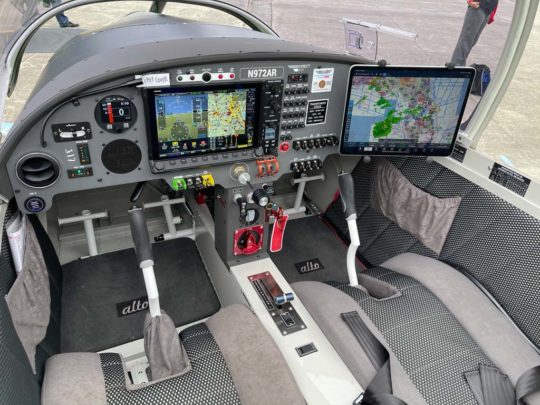 The fine flying qualities of Alto 912 TG stem from the design of the wing. Its rectangular wing and a profile using a broad leading edge provide predictable stall characteristics and behavior. "The wing is a semi-monocoque structure and is equipped with built-in tanks with a capacity of 100 liters (26.4 U.S. gallons) of fuel," Direct Fly said.
At the rear of the fuselage is the designer's standard cruciform tail employing curved surfaces for a smooth airflow and greatest effectiveness. All metal structures are braced by a web of diagonal members making for great strength and rigidity. The wing-fuselage joint is smoothed by an extended strake that fluidly incorporates Alto's deep-descending flaps at this important junction.
The fine flying qualities of Alto 912 TG stem from the design of the wing. Its rectangular wing and a profile using a broad leading edge provide predictable stall characteristics and behavior. "The wing is a semi-monocoque structure and is equipped with built-in tanks with a capacity of 100 liters (26.4 U.S. gallons) of fuel," Direct Fly said.
At the rear of the fuselage is the designer's standard cruciform tail employing curved surfaces for a smooth airflow and greatest effectiveness. All metal structures are braced by a web of diagonal members making for great strength and rigidity. The wing-fuselage joint is smoothed by an extended strake that fluidly incorporates Alto's deep-descending flaps at this important junction.
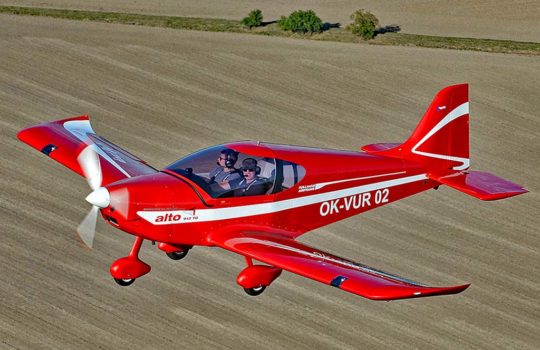 Flight control movements transmit pilot inputs through pushrods and cables. Directional steering of the nosewheel is via dual pedals in front of each occupant. Brakes are hydraulically controlled by a lever located on the center console, readily accessible to either occupant.
Alto landing gear is standard tricycle format and the main gear is fixed to the fuselage on flexible laminate composite legs.
You enter the low wing cockpit aided by foot pegs mounted at the trailing edge of the wing on each side. The generous 43-inch wide cockpit provides plenty of room and is wider than a Cessna 172.
Flight control movements transmit pilot inputs through pushrods and cables. Directional steering of the nosewheel is via dual pedals in front of each occupant. Brakes are hydraulically controlled by a lever located on the center console, readily accessible to either occupant.
Alto landing gear is standard tricycle format and the main gear is fixed to the fuselage on flexible laminate composite legs.
You enter the low wing cockpit aided by foot pegs mounted at the trailing edge of the wing on each side. The generous 43-inch wide cockpit provides plenty of room and is wider than a Cessna 172.
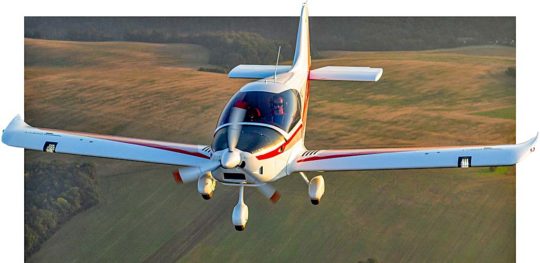 The overhead canopy slides forward smoothly on rails allowing plenty of ventilation during taxi. The canopy is secured for takeoff and cannot be opened in flight.
As the new year starts, Scott plans to visit the main airshows, kicking off with the
The overhead canopy slides forward smoothly on rails allowing plenty of ventilation during taxi. The canopy is secured for takeoff and cannot be opened in flight.
As the new year starts, Scott plans to visit the main airshows, kicking off with the 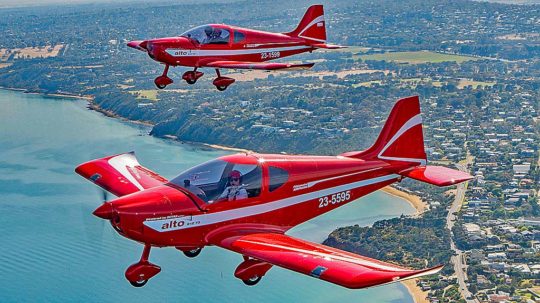
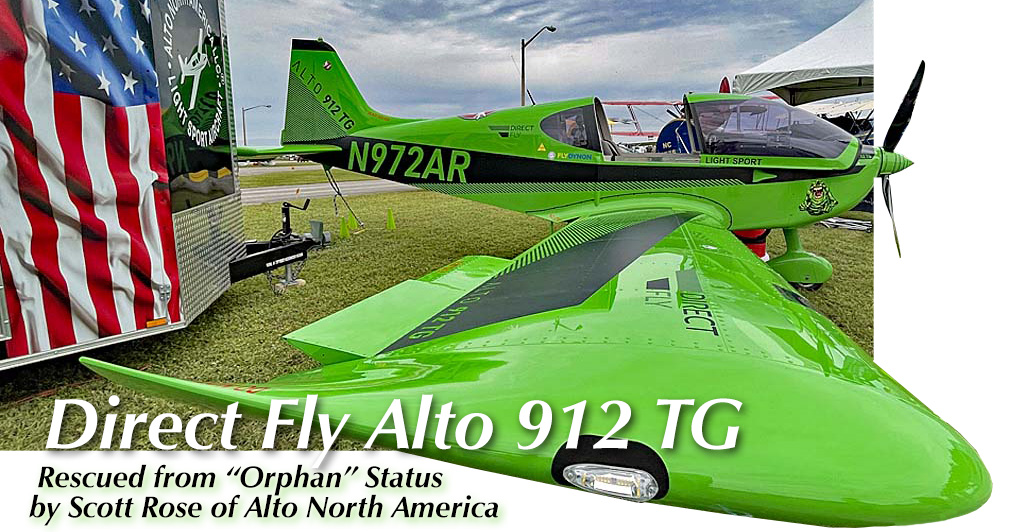
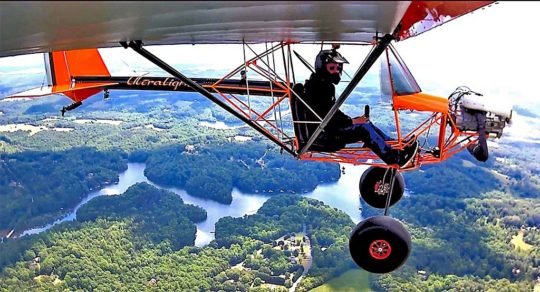 Those who watched
Those who watched 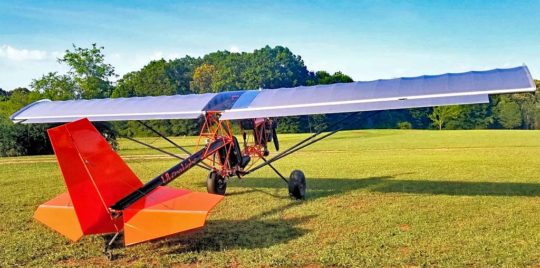 "For $7,500 you can confirm your kit reservations," stated Top Rudder. OK, the deposit is not unreasonable but what's the full price tag and when can you get one? Some readers note that it was promised a while back but other factors, such as building SuperSTOL aircraft kits as fast as they could, got in the way.
A 103 Solo without engine, propeller, or avionics lists for $15,500. Alright, that sounds affordable but let's add up the essentials. A 103 Solo airframe with engine, prop, and basic instruments sells for $22,000. However, to squeeze into Part 103's tight pants, you'll need a parachute, adding $3,000. Top Rudder uses the
"For $7,500 you can confirm your kit reservations," stated Top Rudder. OK, the deposit is not unreasonable but what's the full price tag and when can you get one? Some readers note that it was promised a while back but other factors, such as building SuperSTOL aircraft kits as fast as they could, got in the way.
A 103 Solo without engine, propeller, or avionics lists for $15,500. Alright, that sounds affordable but let's add up the essentials. A 103 Solo airframe with engine, prop, and basic instruments sells for $22,000. However, to squeeze into Part 103's tight pants, you'll need a parachute, adding $3,000. Top Rudder uses the 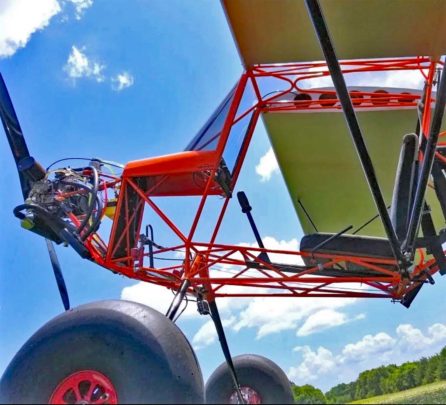 So, $25,000 for a fully equipped 103 Solo in kit form. "Yes, we plan to supply them as a ready-to-fly model," noted Troy; this is perfectly OK within the very spare Part 103 regulation. No price for the RTF version was given because it is still a bit early in the production process.
"It's go time," Amy enthused! "We're taking orders now. Our first kits will ship in first quarter of next year," that is, by March 2021, she said.
In this
So, $25,000 for a fully equipped 103 Solo in kit form. "Yes, we plan to supply them as a ready-to-fly model," noted Troy; this is perfectly OK within the very spare Part 103 regulation. No price for the RTF version was given because it is still a bit early in the production process.
"It's go time," Amy enthused! "We're taking orders now. Our first kits will ship in first quarter of next year," that is, by March 2021, she said.
In this 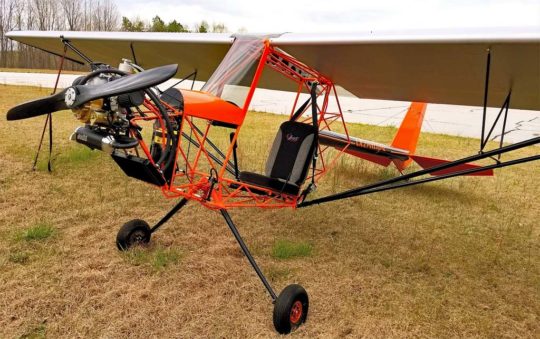
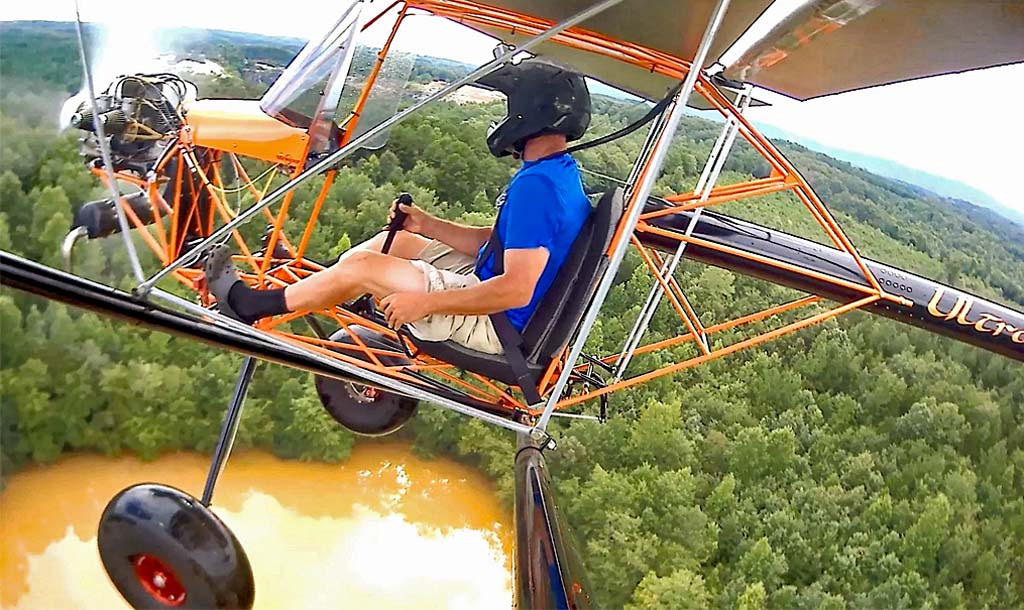
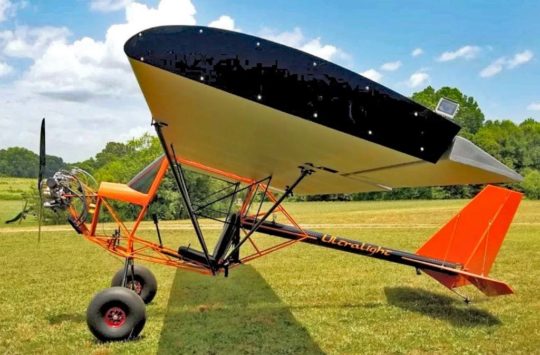 What does Ruckus add?
Top Rudder lists the advantages to Ruckus: Improved takeoff and landing performance. If you add the
What does Ruckus add?
Top Rudder lists the advantages to Ruckus: Improved takeoff and landing performance. If you add the 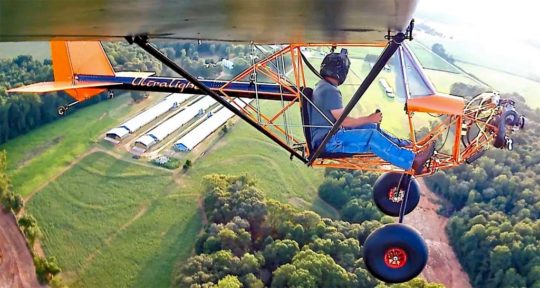 Place the same deposit of $7,500 for a kit without engine, prop, or avionics to see an airframe price of $19,000. Add engine, prop and avionics for a final total of $30,500 yet you can add more if you wish.
Ruckus options include: Beringer brakes; locking tail wheel; upgraded windscreen; Oratex aircraft fabric (no painting required); ballistic parachute; second fuel tank; Aero Classic bush-style tires or upgrade to 26-inch Airstreak bush wheels for $2,418.
That's still not all. "Options coming soon include a MTOW (Maximum Takeoff Weight) upgrade components and floats." I haven't seen Troy stop designing for years. I see no reason he'll stop now but your solo fun-flying machine is nearly ready.
Place the same deposit of $7,500 for a kit without engine, prop, or avionics to see an airframe price of $19,000. Add engine, prop and avionics for a final total of $30,500 yet you can add more if you wish.
Ruckus options include: Beringer brakes; locking tail wheel; upgraded windscreen; Oratex aircraft fabric (no painting required); ballistic parachute; second fuel tank; Aero Classic bush-style tires or upgrade to 26-inch Airstreak bush wheels for $2,418.
That's still not all. "Options coming soon include a MTOW (Maximum Takeoff Weight) upgrade components and floats." I haven't seen Troy stop designing for years. I see no reason he'll stop now but your solo fun-flying machine is nearly ready. 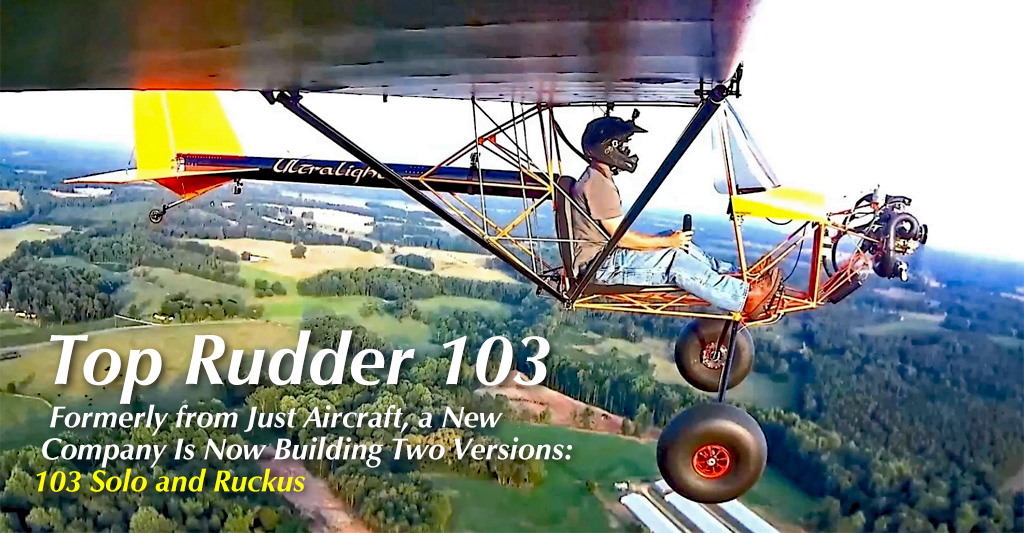
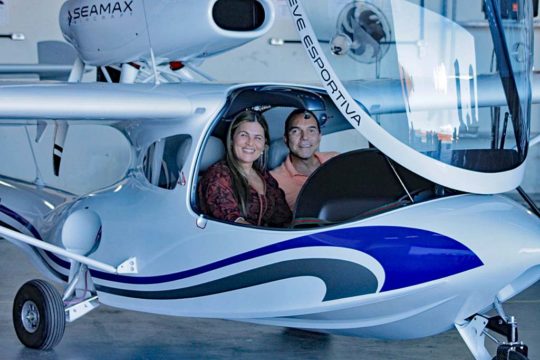 Joining the movement,
Joining the movement, 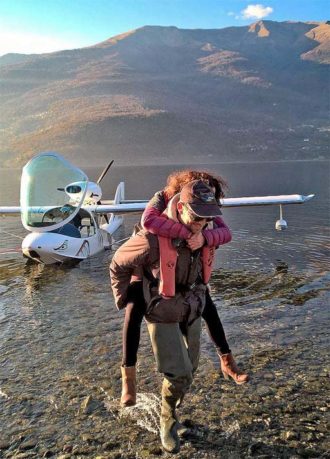 Seamax officials have made good use of their location at
Seamax officials have made good use of their location at 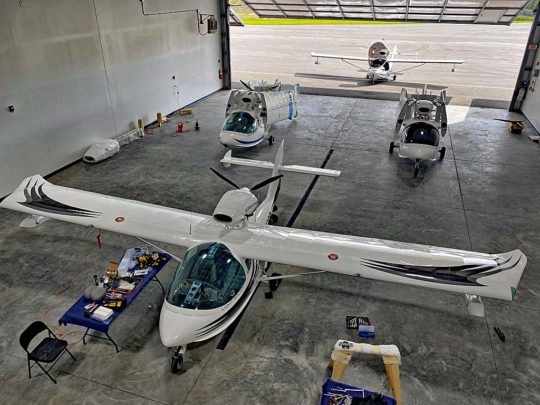
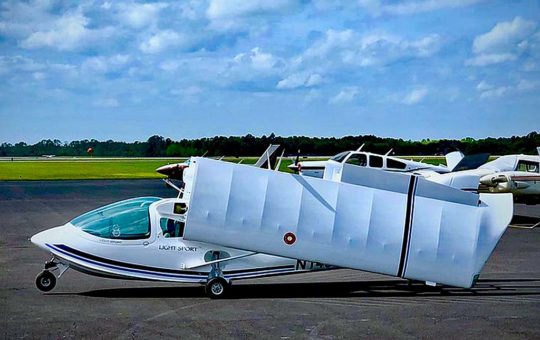 "This is the fourth year in a row that Seamax will exhibit the M-22 in this great show with the presence of our Brazilian team," added Shalom. "We will be right in the middle of the show at our traditional booth #71."
The
"This is the fourth year in a row that Seamax will exhibit the M-22 in this great show with the presence of our Brazilian team," added Shalom. "We will be right in the middle of the show at our traditional booth #71."
The 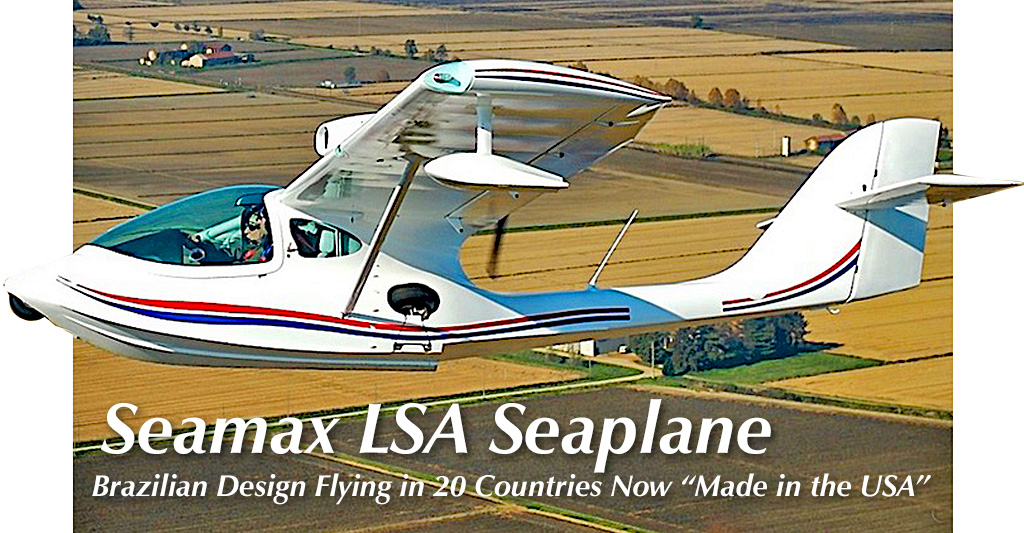
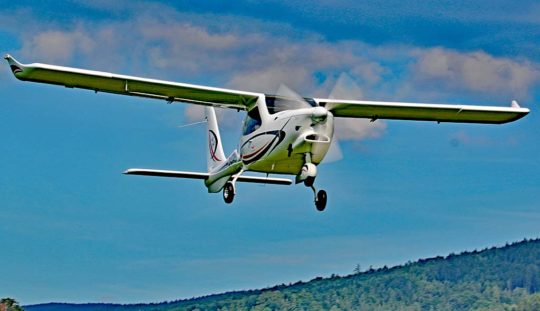 Then came the sophisticated CTLS, wholly redone for the American market. It enlarged the cabin and lengthened the fuselage becoming more deluxe throughout.
Now, we come to F2 in what I'm calling the third generation of the iconic shape that still leads the LSA market after almost 17 years. The one and only example presently in America is currently based at
Then came the sophisticated CTLS, wholly redone for the American market. It enlarged the cabin and lengthened the fuselage becoming more deluxe throughout.
Now, we come to F2 in what I'm calling the third generation of the iconic shape that still leads the LSA market after almost 17 years. The one and only example presently in America is currently based at 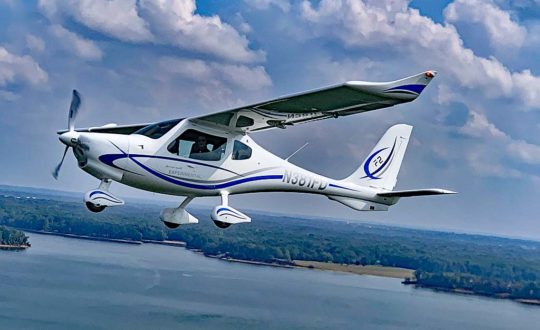 Nearly every airshow was cancelled for 2020 amidst the global economic carnage driven by lockdowns and travel restrictions to contain Covid.
Well, every show was scrubbed except the Midwest LSA Expo in Mt. Vernon, Illinois. Because that one and only event happened — with no negatives regarding the virus, so far as I know — I got to see and fly Flight Design's latest and greatest, the F2. Not only was the airshow a welcome change from the social barriers everyone had faced over the last few months, but Midwest 2020 provided a venue to see and fly the new model.
"CTSW was a Porsche. CTLS was a Corvette. F2 is a Cadillac," said Tom Gutmann, Jr., the younger half of the father and son
Nearly every airshow was cancelled for 2020 amidst the global economic carnage driven by lockdowns and travel restrictions to contain Covid.
Well, every show was scrubbed except the Midwest LSA Expo in Mt. Vernon, Illinois. Because that one and only event happened — with no negatives regarding the virus, so far as I know — I got to see and fly Flight Design's latest and greatest, the F2. Not only was the airshow a welcome change from the social barriers everyone had faced over the last few months, but Midwest 2020 provided a venue to see and fly the new model.
"CTSW was a Porsche. CTLS was a Corvette. F2 is a Cadillac," said Tom Gutmann, Jr., the younger half of the father and son 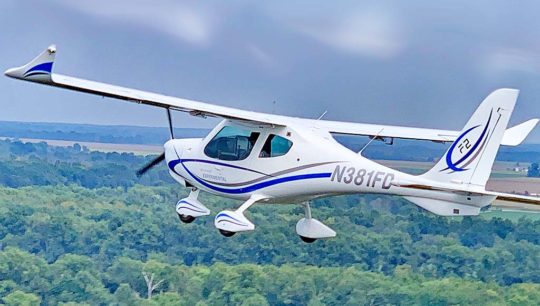 Tom explained that F2 may look similar to CT but is a nose-to-tail, tip-to-tip refreshed design. It has been some time in development because as Tom noted, "Flight Design engineers had to rework the whole airplane. It is significantly larger than CTLS yet final production models should weigh no more." That's some accomplishment!
It is also built quite differently. All CTLS are essentially "hand made" with hand-layup molds that display the skill of factory workers yet makes each one unique. For F2, Tom said, Flight Design uses molds created on 5-axis CNC shaping tools so each one is fabricated to precise specifications. You may not be able to see the difference in construction but the new method is far better for serial production.
Tom explained that F2 may look similar to CT but is a nose-to-tail, tip-to-tip refreshed design. It has been some time in development because as Tom noted, "Flight Design engineers had to rework the whole airplane. It is significantly larger than CTLS yet final production models should weigh no more." That's some accomplishment!
It is also built quite differently. All CTLS are essentially "hand made" with hand-layup molds that display the skill of factory workers yet makes each one unique. For F2, Tom said, Flight Design uses molds created on 5-axis CNC shaping tools so each one is fabricated to precise specifications. You may not be able to see the difference in construction but the new method is far better for serial production.
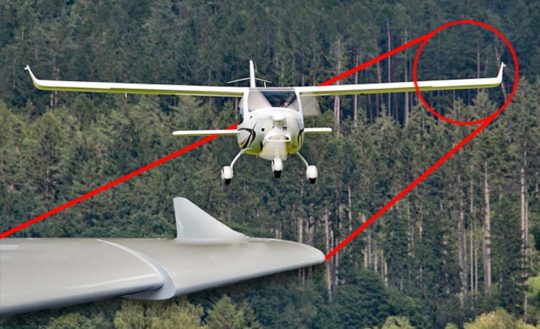 "F2 is manufactured to close tolerances in pre-impregnated carbon fiber for great structural strength and light weight," said Flight Design in Germany. With prepreg carbon fiber from American company Hexcel, F2's honeycomb-core fuselage signifies a big step forward.
Likewise, F2's new wing is a major redesign; the outboard sections feature aerodynamic cuffs (nearby photo).
F2’s tail is all-new as well. CTLS's full-flying stabilator is replaced with a wider stabilizer that has a discrete two-piece elevator with a center section that remains stationary forming what's often called a duck tail. This aids in meeting the ASTM handling requirement. One result is that the airplane does not pitch up during a departure stall.
"F2 is manufactured to close tolerances in pre-impregnated carbon fiber for great structural strength and light weight," said Flight Design in Germany. With prepreg carbon fiber from American company Hexcel, F2's honeycomb-core fuselage signifies a big step forward.
Likewise, F2's new wing is a major redesign; the outboard sections feature aerodynamic cuffs (nearby photo).
F2’s tail is all-new as well. CTLS's full-flying stabilator is replaced with a wider stabilizer that has a discrete two-piece elevator with a center section that remains stationary forming what's often called a duck tail. This aids in meeting the ASTM handling requirement. One result is that the airplane does not pitch up during a departure stall.
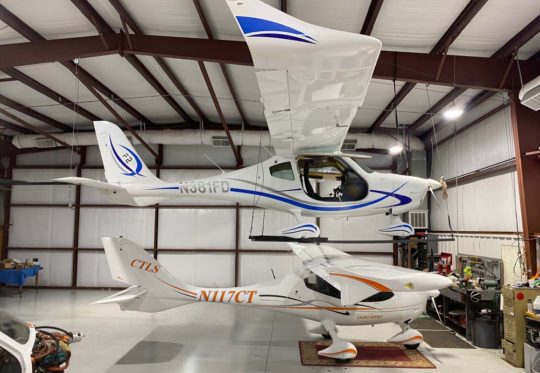 The altered horizontal tail works cooperatively with the wing cuffs to make a highly stall-resistant airframe, a feature FAA admires so much they gave Icon Aircraft
The altered horizontal tail works cooperatively with the wing cuffs to make a highly stall-resistant airframe, a feature FAA admires so much they gave Icon Aircraft 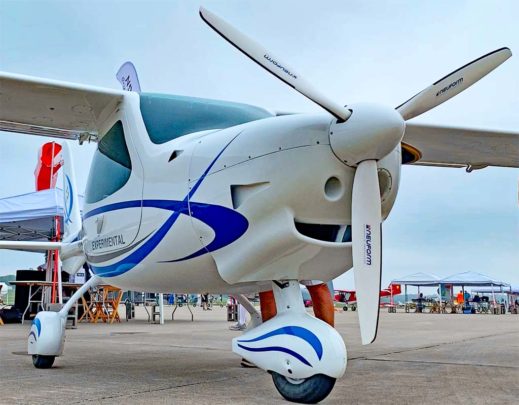
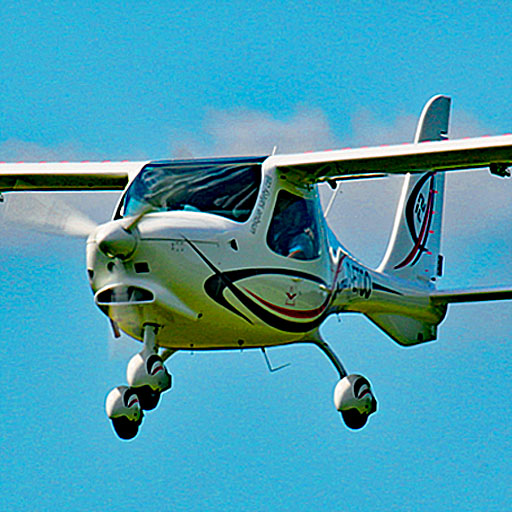 Cruise speed at a low altitude (approximately 3,000 feet density altitude) exceeded 115 knots while burning barely over 4 gallons an hour; Rotax's 912iS is known for its fuel miserliness. This allows a topped-off F2 to fly close to 1,000 statute miles. You can fly cross country to a destination and return to base without buying fuel. I once enjoyed this quality while
Cruise speed at a low altitude (approximately 3,000 feet density altitude) exceeded 115 knots while burning barely over 4 gallons an hour; Rotax's 912iS is known for its fuel miserliness. This allows a topped-off F2 to fly close to 1,000 statute miles. You can fly cross country to a destination and return to base without buying fuel. I once enjoyed this quality while 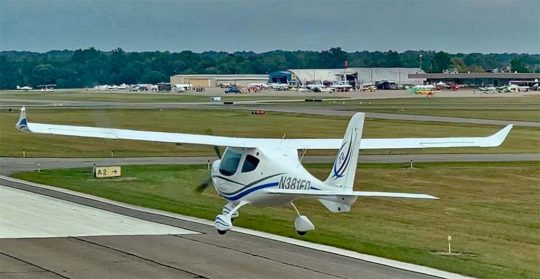 A combination of wing cuffs, revised empennage with its fixed duck tail, and tip-vortices-reducing winglets make F2’s stalls and slow flight about as uneventful as I've experienced; much like Icon's A5, which was equally docile at slow speeds. Even with the joystick full aft F2 did nothing exciting. It did not drop a wing and resisted any stall break.
A combination of wing cuffs, revised empennage with its fixed duck tail, and tip-vortices-reducing winglets make F2’s stalls and slow flight about as uneventful as I've experienced; much like Icon's A5, which was equally docile at slow speeds. Even with the joystick full aft F2 did nothing exciting. It did not drop a wing and resisted any stall break.
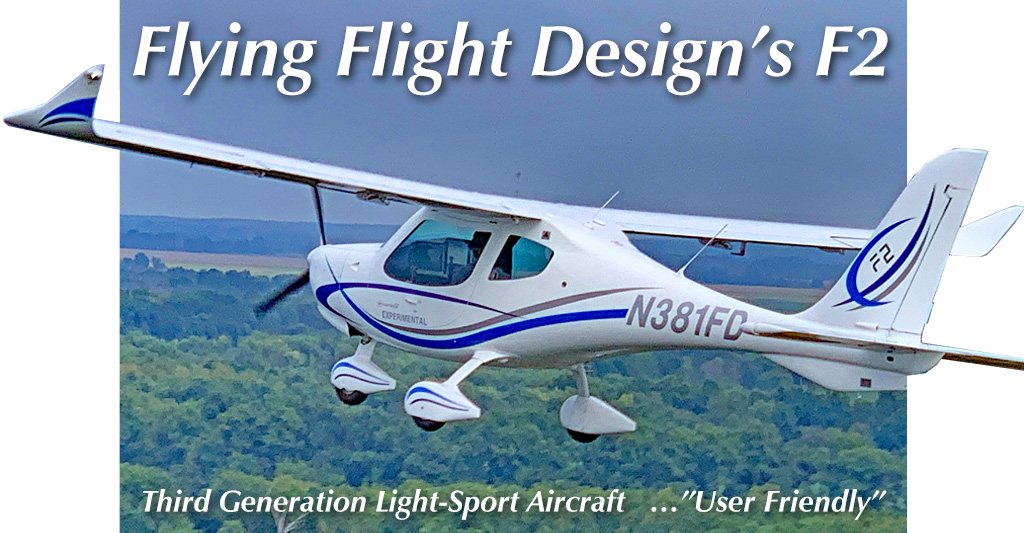
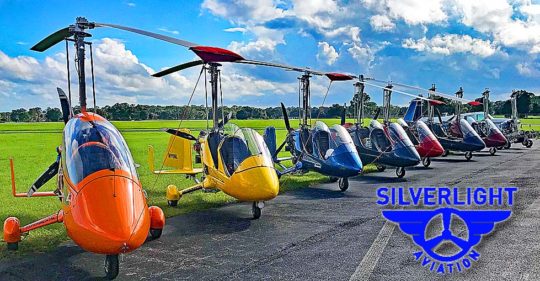 The first requirement is understandable. It's all fine and good to wish you could buy something but if it's way out of your price range or if you simply cannot commit to a large purchase right now, it isn't likely to happen… and after all, who doesn't love a good price?
The second requirement addresses human nature. Once you've made your decision you want it as fast as you can get it. Most of us feel that way about most products we research.
The first requirement is understandable. It's all fine and good to wish you could buy something but if it's way out of your price range or if you simply cannot commit to a large purchase right now, it isn't likely to happen… and after all, who doesn't love a good price?
The second requirement addresses human nature. Once you've made your decision you want it as fast as you can get it. Most of us feel that way about most products we research.
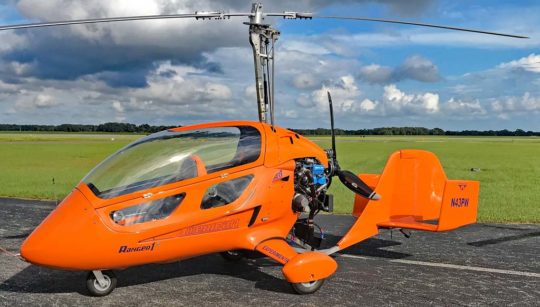 However, when a brand-new airplane stays or slips below the $100,000 mark, lots more pilots can think about affording it. If six figures is still way too high, please read all kinds of articles on this website for highly-affordable aircraft (I covered 10 in April 2020 alone;
However, when a brand-new airplane stays or slips below the $100,000 mark, lots more pilots can think about affording it. If six figures is still way too high, please read all kinds of articles on this website for highly-affordable aircraft (I covered 10 in April 2020 alone; 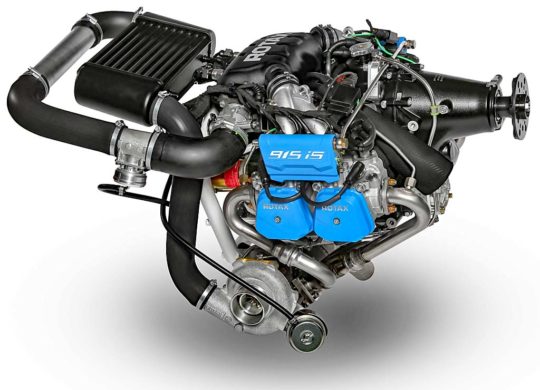 More recently, he turned his attention to the
More recently, he turned his attention to the 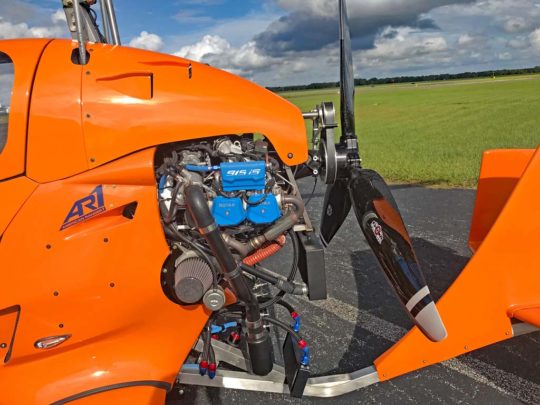 SilverLight offers a build-assist center at their Zephyrhills airport base near Tampa, Florida. Yet the kit is not a particularly daunting task. For one, you need do no fabric work or painting, two skills that are fairly demanding of a kit builder.
The good news… a kit can save money so if affordability is important to you, assembling a kit may be an opportunity, not a deterrent. As a benefit, you will know your aircraft better than someone who buys a ready-to-fly aircraft.
The AR-1 kit stats at $39,500 without engine. A 100 horsepower Rotax 912 will add $22,500, or a fuel-injected 912iS adds $28,000. The 115-horsepower Rotax 914 adds $31,500 and the super-sized 915iS adds $42,000. Those price sum to $62,000 to $67,500 to $71,000 to $81,500.
SilverLight offers a build-assist center at their Zephyrhills airport base near Tampa, Florida. Yet the kit is not a particularly daunting task. For one, you need do no fabric work or painting, two skills that are fairly demanding of a kit builder.
The good news… a kit can save money so if affordability is important to you, assembling a kit may be an opportunity, not a deterrent. As a benefit, you will know your aircraft better than someone who buys a ready-to-fly aircraft.
The AR-1 kit stats at $39,500 without engine. A 100 horsepower Rotax 912 will add $22,500, or a fuel-injected 912iS adds $28,000. The 115-horsepower Rotax 914 adds $31,500 and the super-sized 915iS adds $42,000. Those price sum to $62,000 to $67,500 to $71,000 to $81,500.
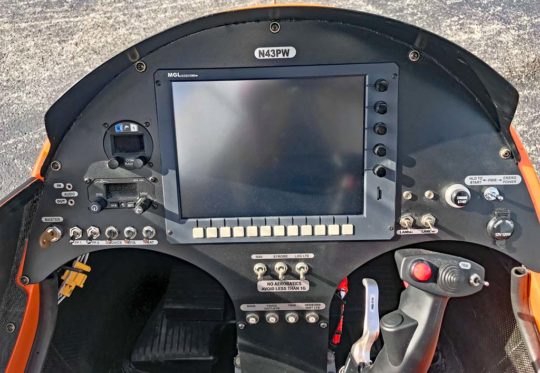 You'll also need a wiring harness (about $2,500), and painting of the fuselage parts adds $3,500, and avionics add a few hundred dollars to a few thousand with too many choices to list here. A few other options may tempt you, for example, the removable full enclosure for $8,500.
Builder assistance — including the space and tools needed — will add $6,500 to $8,500 depending on options you choose.
So you could possibly spend north of $100,000 but you'd have a fully-loaded and very powerful aircraft. Conversely, if you want to keep the cost to a minimum, you could get airborne for perhaps $75,000-80,000 and at that price, you are still in the affordable realm for a brand-new state-of-the-gyroplane-art. Factory-represented used models with low hours may save even more.
You'll also need a wiring harness (about $2,500), and painting of the fuselage parts adds $3,500, and avionics add a few hundred dollars to a few thousand with too many choices to list here. A few other options may tempt you, for example, the removable full enclosure for $8,500.
Builder assistance — including the space and tools needed — will add $6,500 to $8,500 depending on options you choose.
So you could possibly spend north of $100,000 but you'd have a fully-loaded and very powerful aircraft. Conversely, if you want to keep the cost to a minimum, you could get airborne for perhaps $75,000-80,000 and at that price, you are still in the affordable realm for a brand-new state-of-the-gyroplane-art. Factory-represented used models with low hours may save even more.
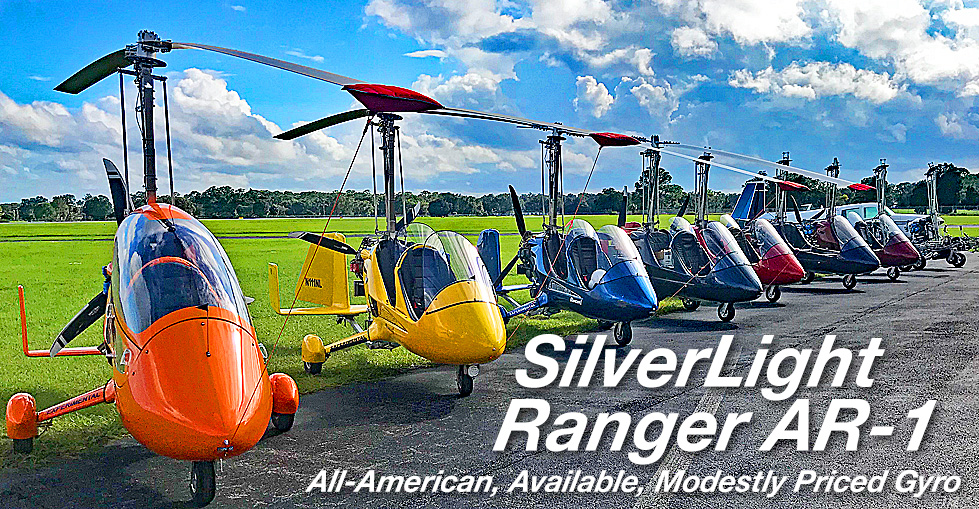
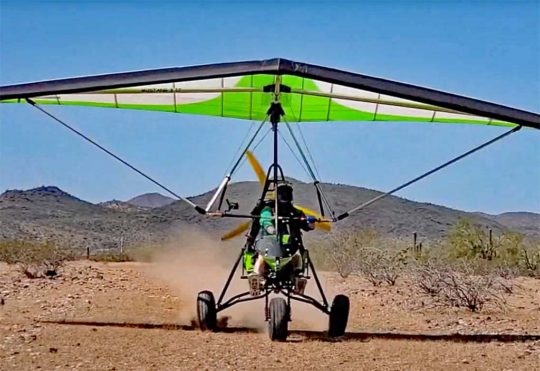 Denny has an enviable position to some. Imagine any fixed wing instructor saying, "I wish the aircraft would do some operations differently for my teaching. I can't find one that exactly matches what I seek, so, you know what? I'll just design what I want."
Yeah, sure. Most of us never have that chance. Instead, we learn to adapt to the aircraft. As an example, what if you wanted the throttle in a different place, or any number of possible changes.
In a long career that has included talking to CFIs from around the world, I have never met a fixed wing flight instructor who set about making the airplane he truly wanted. Denny Reed decided precisely that. Then he went and did it.
Denny has an enviable position to some. Imagine any fixed wing instructor saying, "I wish the aircraft would do some operations differently for my teaching. I can't find one that exactly matches what I seek, so, you know what? I'll just design what I want."
Yeah, sure. Most of us never have that chance. Instead, we learn to adapt to the aircraft. As an example, what if you wanted the throttle in a different place, or any number of possible changes.
In a long career that has included talking to CFIs from around the world, I have never met a fixed wing flight instructor who set about making the airplane he truly wanted. Denny Reed decided precisely that. Then he went and did it.
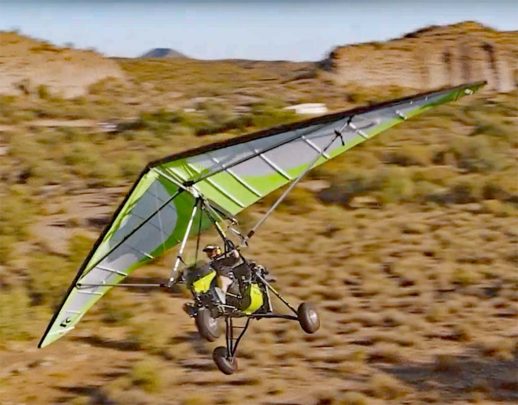 To make the airplane fit the terrain Denny wanted to access — creek beds, desert landscapes, mountainous terrain and more — he knew he needed a very durable, strong, and well-performing trike.
When I think of trikes, I think of
To make the airplane fit the terrain Denny wanted to access — creek beds, desert landscapes, mountainous terrain and more — he knew he needed a very durable, strong, and well-performing trike.
When I think of trikes, I think of 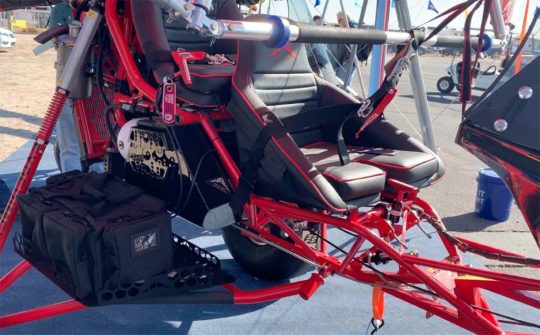 "When you chase strength and when you chase simple, you get ugly," observed philosophical trike designer Denny Reed with a smile on his face. "When we first showed it, I was real proud of it but one of the first comments we got was, 'It looks like a post-war Russian tractor.'" Denny laughed aloud as he related the story.
That's why Goat looks as it does. If it seems a riot of tubes going every which way, consider the thought Denny put into it.
"Every notch, every cut, every bend, every tig weld seems like it has a story," he said while not ignoring the wisdom of and guidance from other aviation designers, "We nonetheless wanted something that said off-road, crawler, racing."
After a few iterations, he was happy and production began. Customers were waiting.
"When you chase strength and when you chase simple, you get ugly," observed philosophical trike designer Denny Reed with a smile on his face. "When we first showed it, I was real proud of it but one of the first comments we got was, 'It looks like a post-war Russian tractor.'" Denny laughed aloud as he related the story.
That's why Goat looks as it does. If it seems a riot of tubes going every which way, consider the thought Denny put into it.
"Every notch, every cut, every bend, every tig weld seems like it has a story," he said while not ignoring the wisdom of and guidance from other aviation designers, "We nonetheless wanted something that said off-road, crawler, racing."
After a few iterations, he was happy and production began. Customers were waiting.
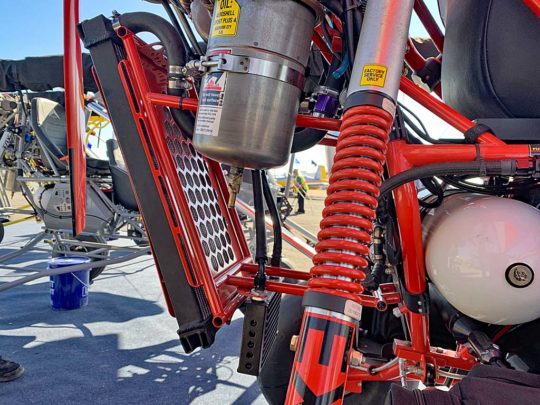 The entire frame is welded chrome moly with a ceramic coating.
Like most trike builders, Denny does not attempt his own wing. That type of construction is its own art and science that one company has proven to do better than anyone else. The company, another trike builder called North Wing, manufactures wings for trikes for other carriage manufacturers. After more than 30 years in the business, North Wing owner, Kamron Blevins largely owns the space. (He also builds wings for Evolution among several other trike aircraft suppliers.) A couple foreign trike builders make their own wings —
The entire frame is welded chrome moly with a ceramic coating.
Like most trike builders, Denny does not attempt his own wing. That type of construction is its own art and science that one company has proven to do better than anyone else. The company, another trike builder called North Wing, manufactures wings for trikes for other carriage manufacturers. After more than 30 years in the business, North Wing owner, Kamron Blevins largely owns the space. (He also builds wings for Evolution among several other trike aircraft suppliers.) A couple foreign trike builders make their own wings — 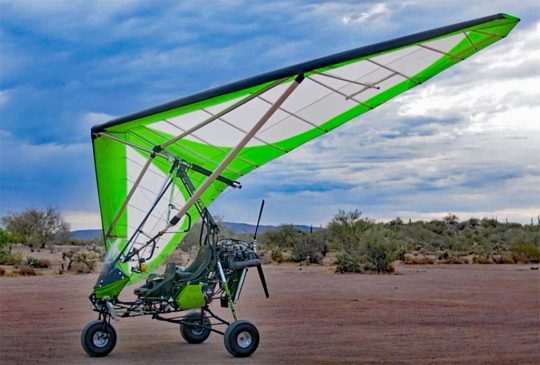 Prices start at $36,500 (in summer 2020; subject to change). Of course, you can spend more, but with that modest starting cost for this tougher-than-nails trike, Goat qualifies as an "affordable aircraft" as this website promotes. (Of course, "affordable" means something different to every single pilot, but at about the cost of an average new car, I'd say this was a very fair asking price.)
Prices start at $36,500 (in summer 2020; subject to change). Of course, you can spend more, but with that modest starting cost for this tougher-than-nails trike, Goat qualifies as an "affordable aircraft" as this website promotes. (Of course, "affordable" means something different to every single pilot, but at about the cost of an average new car, I'd say this was a very fair asking price.) 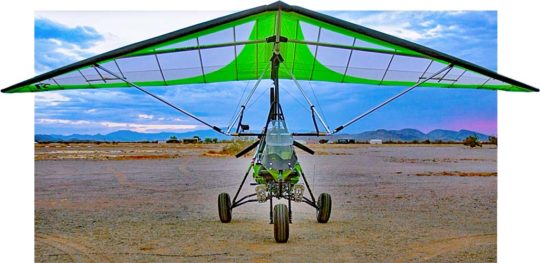 "I enjoy teaching," Denny said, returning to what is obviously a favorite topic after he described details of how he builds Goat.
"After 9,200 hours and 300 students, we have a perfect safety record." He added, rightly so, "I'm very proud of that." He related stories of students who spoke with him years later saying, "I understand why you were so hard on me during training, Denny." So it's no surprise that he reported getting "a hundred applications a year for trike school."
Here's two videos: a newly-produced one from
"I enjoy teaching," Denny said, returning to what is obviously a favorite topic after he described details of how he builds Goat.
"After 9,200 hours and 300 students, we have a perfect safety record." He added, rightly so, "I'm very proud of that." He related stories of students who spoke with him years later saying, "I understand why you were so hard on me during training, Denny." So it's no surprise that he reported getting "a hundred applications a year for trike school."
Here's two videos: a newly-produced one from 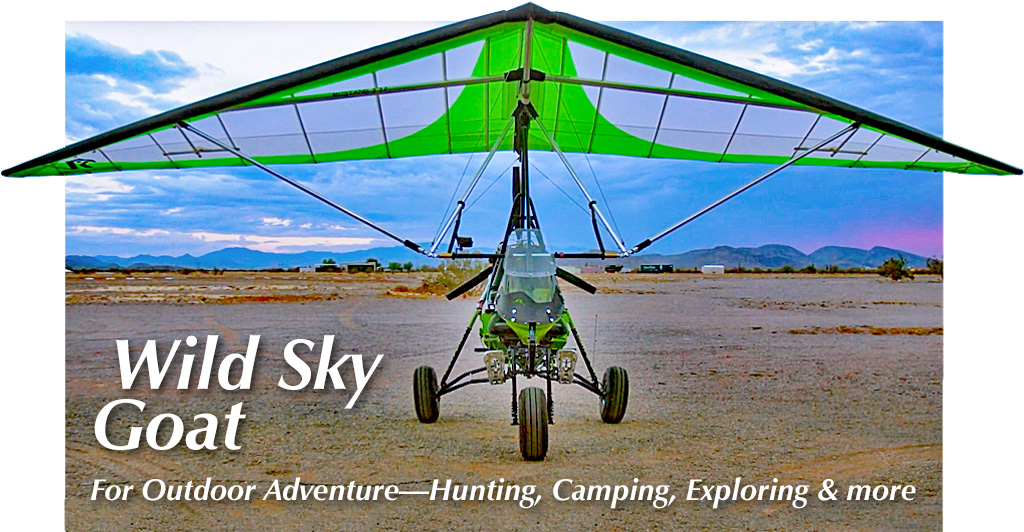
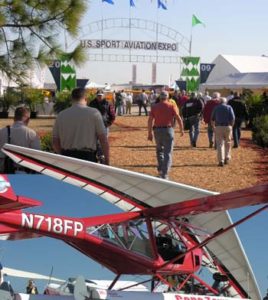 Although a mirror reflection of the greater global economy, many pilots are stunned that airshow after airshow has fallen to the virus. It seems like two or three years ago when, back in February 2020, Videoman Dave and I covered the
Although a mirror reflection of the greater global economy, many pilots are stunned that airshow after airshow has fallen to the virus. It seems like two or three years ago when, back in February 2020, Videoman Dave and I covered the 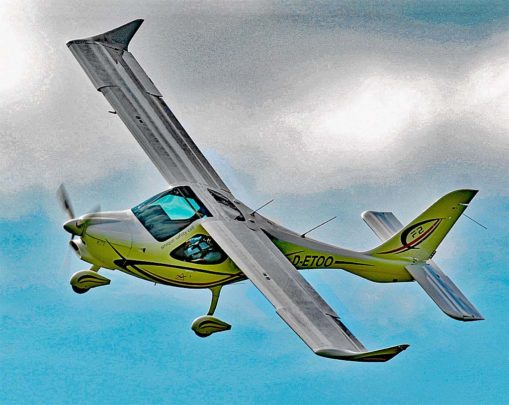 Tom has run
Tom has run 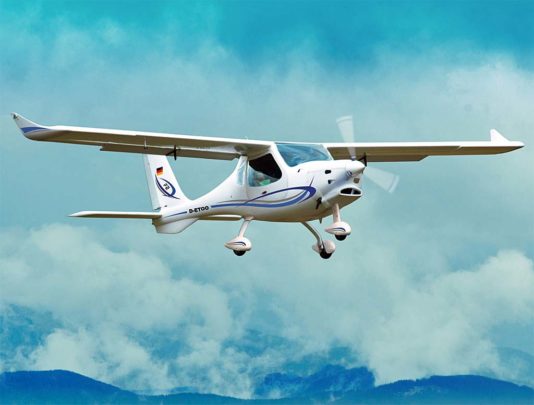 "I'm very impressed with F2. It feels like a bigger airplane, very solid in the air. More stable than I expected. Very easy to land." He's comparing to the CTLS that so many other pilots know.
"F2 feels more stable in the air compared to our CTLS, which offers a sportier feel." Pressing him for details, Tom recounted the following story from a recent flight. It involved F2's autopilot.
"As you know, with the
"I'm very impressed with F2. It feels like a bigger airplane, very solid in the air. More stable than I expected. Very easy to land." He's comparing to the CTLS that so many other pilots know.
"F2 feels more stable in the air compared to our CTLS, which offers a sportier feel." Pressing him for details, Tom recounted the following story from a recent flight. It involved F2's autopilot.
"As you know, with the 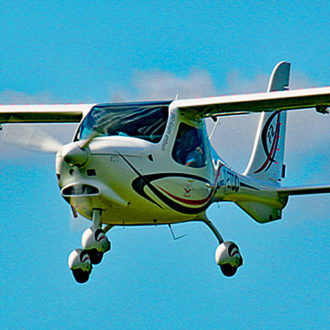 In one of the nearby photos taken from the nose of F2, the vertical surface of the tailplane appears enormous, one to rival the very tall tail on an
In one of the nearby photos taken from the nose of F2, the vertical surface of the tailplane appears enormous, one to rival the very tall tail on an 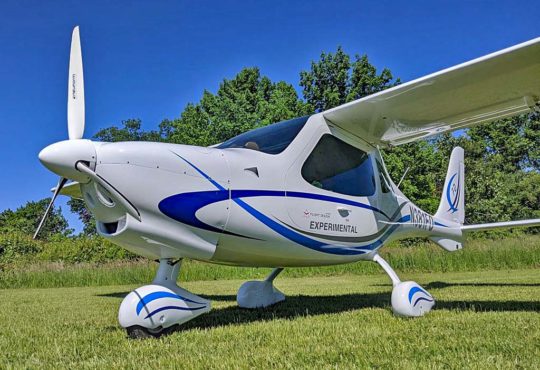 When the flight is over, F2 is reportedly easier to land. I asked how?
"A longer wheelbase reduces porpoising and a single beam landing gear absorbs rebound tendency. "We also think that beam gear will end up being more rugged."
Another helpful feature is the single throttle and brake lever (image below): forward is go; back is stop. Simple. Other designs have used this technique, good because the pilot's hand never needs to move during the critical touchdown and rollout phase of flight.
When the flight is over, F2 is reportedly easier to land. I asked how?
"A longer wheelbase reduces porpoising and a single beam landing gear absorbs rebound tendency. "We also think that beam gear will end up being more rugged."
Another helpful feature is the single throttle and brake lever (image below): forward is go; back is stop. Simple. Other designs have used this technique, good because the pilot's hand never needs to move during the critical touchdown and rollout phase of flight.
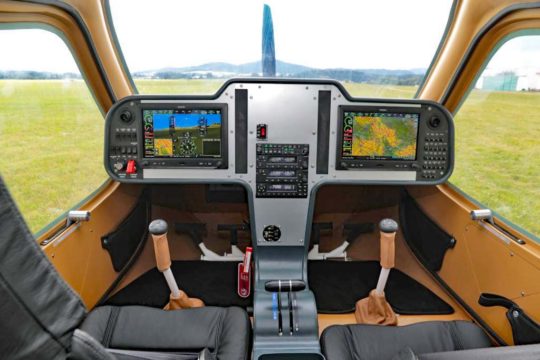
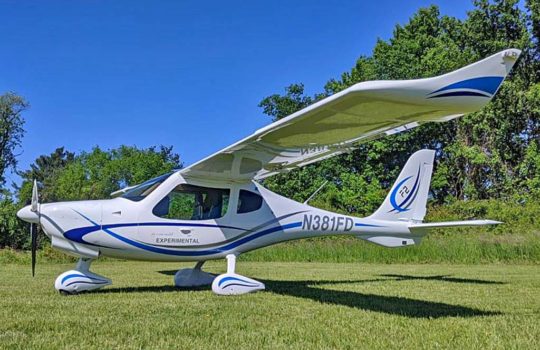
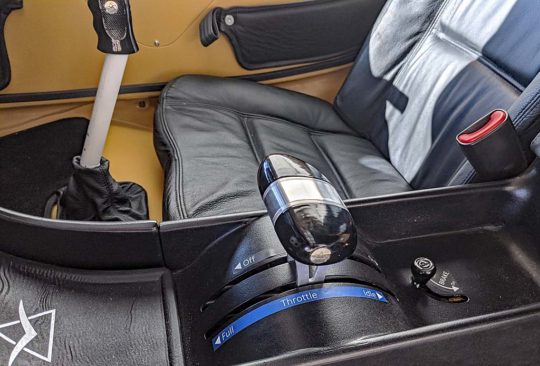
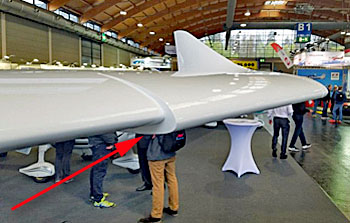 As we discussed the two planes, Tom said he thought I could do the same maneuvers with F2 that I'd done with the Icon A5 and I'd get a similar sensation.
"Departure stalls simply don't," Tom described. "With full flaps, it will 'nod' a bit, a kind of pre-stall but with neutral flaps the stick remains effective at all times."
Tom worked closely with Flight Design during development of F2, playing key roles. He closed saying, "I knew we could achieve those characteristics but I didn't know how well it would fly."
I could almost see his smile over the phone.
I look forward to experience F2, perhaps at the
As we discussed the two planes, Tom said he thought I could do the same maneuvers with F2 that I'd done with the Icon A5 and I'd get a similar sensation.
"Departure stalls simply don't," Tom described. "With full flaps, it will 'nod' a bit, a kind of pre-stall but with neutral flaps the stick remains effective at all times."
Tom worked closely with Flight Design during development of F2, playing key roles. He closed saying, "I knew we could achieve those characteristics but I didn't know how well it would fly."
I could almost see his smile over the phone.
I look forward to experience F2, perhaps at the 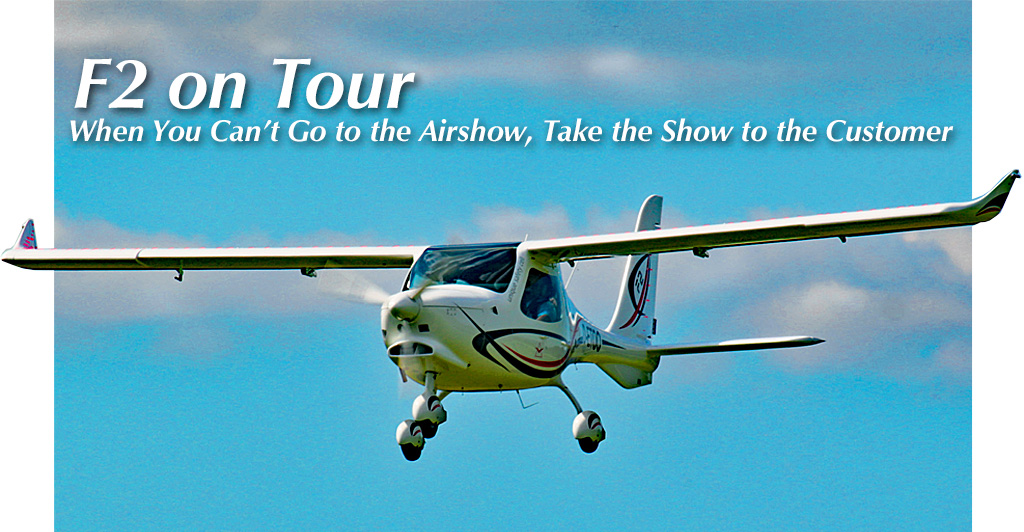
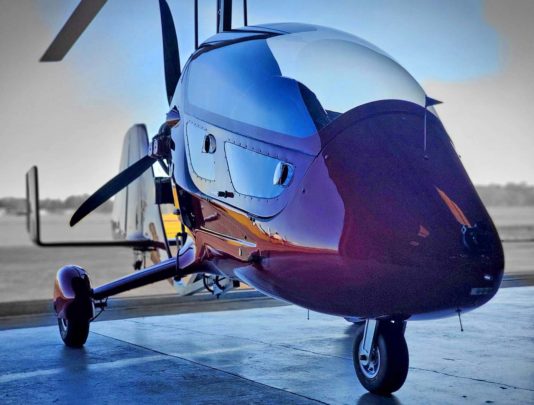 First, a gyroplane can be flown by a Sport Pilot. Other than
First, a gyroplane can be flown by a Sport Pilot. Other than 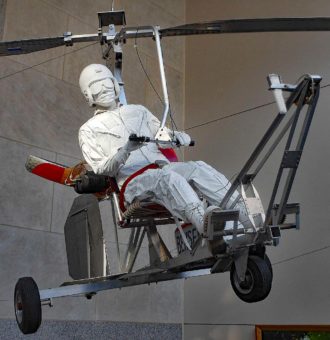
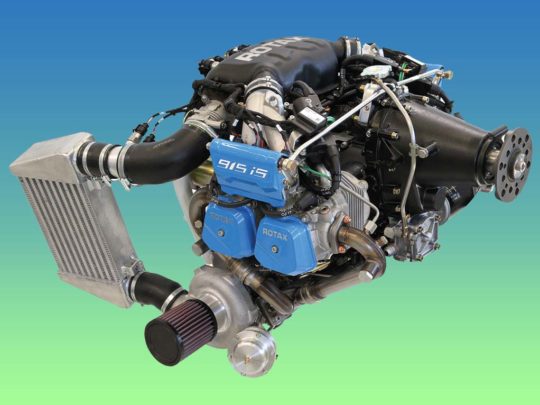 Company leader, Abid Farooqui, notes that Rotax's newest powerplant requires use of an EFIS (Electronic Flight Information System, or digital screen avionics) for engine monitoring that can interface with 915's electronic engine monitoring. Analog gauges are not an option with use of this engine. The lowest cost and simplest EFIS is
Company leader, Abid Farooqui, notes that Rotax's newest powerplant requires use of an EFIS (Electronic Flight Information System, or digital screen avionics) for engine monitoring that can interface with 915's electronic engine monitoring. Analog gauges are not an option with use of this engine. The lowest cost and simplest EFIS is 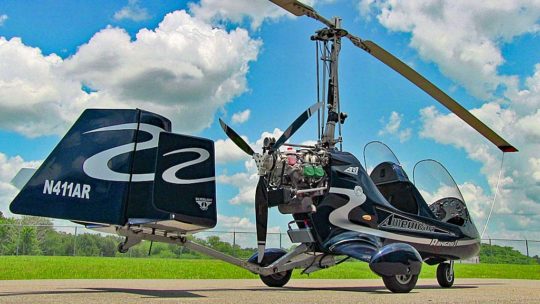 I will link to a video with much more detail but as one example, Rotax's powerful engine has a turbocharger. Those air boosters make air hotter so an intercooler is needed. The trouble with these components is they have to be securely mounted and a gyroplane like AR-1 is slim, so Abid did not want a big intercooler sticking out and upsetting the lines and low drag of his design. As the video below shows, he went to considerable effort to clean up the 915 installation.
To learn all about the many actions Abid took to install Rotax 915s into his aircraft, see
I will link to a video with much more detail but as one example, Rotax's powerful engine has a turbocharger. Those air boosters make air hotter so an intercooler is needed. The trouble with these components is they have to be securely mounted and a gyroplane like AR-1 is slim, so Abid did not want a big intercooler sticking out and upsetting the lines and low drag of his design. As the video below shows, he went to considerable effort to clean up the 915 installation.
To learn all about the many actions Abid took to install Rotax 915s into his aircraft, see 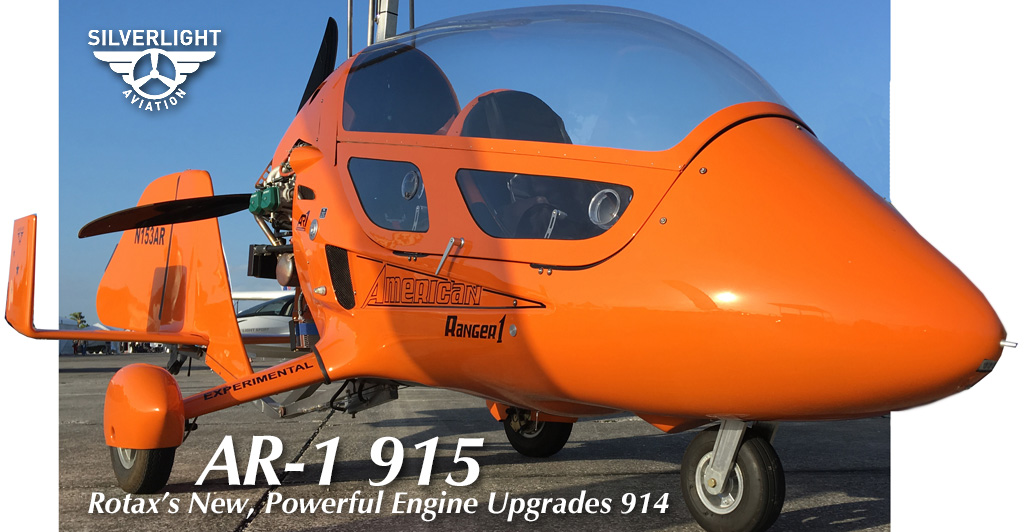
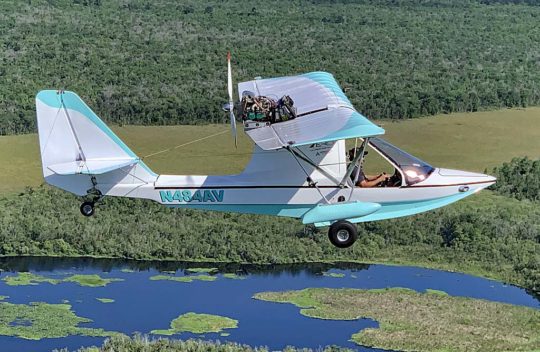 Yes, you read that right and that figure includes everything needed although you may elect added-cost options such as glass avionics or a specialized paint job. While some models of LSA seaplanes appeal to the wealthy class at prices approaching $400,000, Aero Adventure makes …seaplanes for the rest of us.
Two years ago, Aero Adventure was focused on their
Yes, you read that right and that figure includes everything needed although you may elect added-cost options such as glass avionics or a specialized paint job. While some models of LSA seaplanes appeal to the wealthy class at prices approaching $400,000, Aero Adventure makes …seaplanes for the rest of us.
Two years ago, Aero Adventure was focused on their 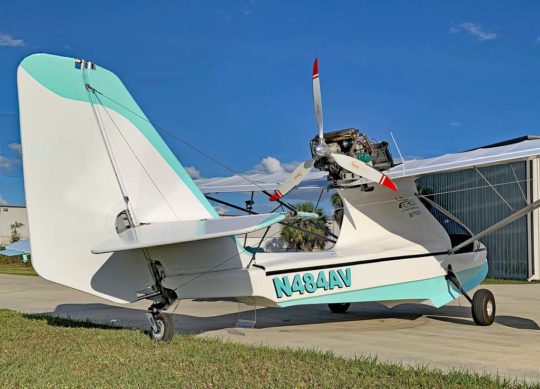 While Alex and team previously hoped to debut the new model at
While Alex and team previously hoped to debut the new model at 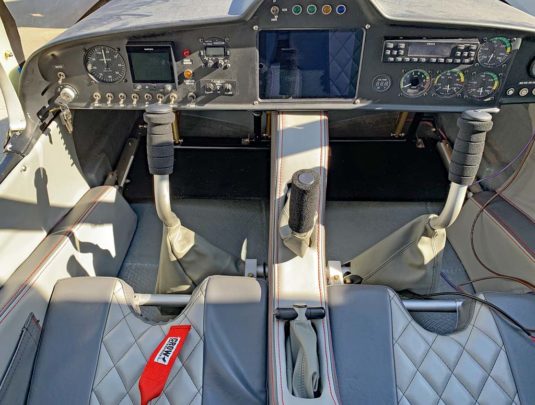 Meanwhile, in my visit at the end of March 2020, I reviewed several items of the long work list required to achieve Special LSA status and it appears to me that Aero Adventure has nearly finished all work. They hired outside talent to assist them in assuring they fully meet the ASTM standards FAA requires before accepting a new model into the fleet. They've also completed the numerous manuals required before they can declare their compliance to standards.
Building the case for FAA acceptance has absorbed a lot of time and money, but Alex and crew have worked the rest of the effort, too. A major decision was made about representation of the enhanced line.
Meanwhile, in my visit at the end of March 2020, I reviewed several items of the long work list required to achieve Special LSA status and it appears to me that Aero Adventure has nearly finished all work. They hired outside talent to assist them in assuring they fully meet the ASTM standards FAA requires before accepting a new model into the fleet. They've also completed the numerous manuals required before they can declare their compliance to standards.
Building the case for FAA acceptance has absorbed a lot of time and money, but Alex and crew have worked the rest of the effort, too. A major decision was made about representation of the enhanced line.
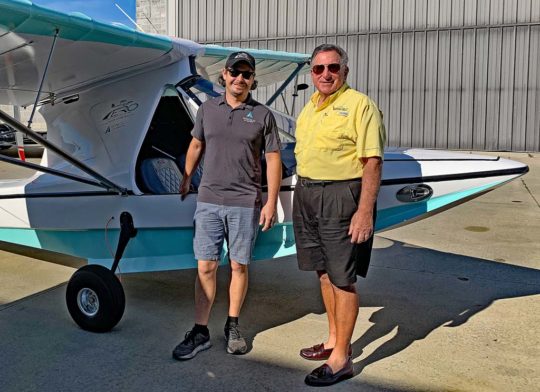 Bristell USA importer, Lou Mancuso, will represent the Aventura SLSA 912. He has already dipped his toe into the water (literally …ask him about it at an airshow) by offering the S-17 version of Aventura but he is stoked about the potential for the fully-built seaplane with a modest price. Aventura SLSA 912 will be north of $100,000 but significantly less than all other Special LSA seaplanes and far, far less than Icon's A5.
Lou has carefully built a solid reputation in the Light-Sport Aircraft world (see here
Bristell USA importer, Lou Mancuso, will represent the Aventura SLSA 912. He has already dipped his toe into the water (literally …ask him about it at an airshow) by offering the S-17 version of Aventura but he is stoked about the potential for the fully-built seaplane with a modest price. Aventura SLSA 912 will be north of $100,000 but significantly less than all other Special LSA seaplanes and far, far less than Icon's A5.
Lou has carefully built a solid reputation in the Light-Sport Aircraft world (see here 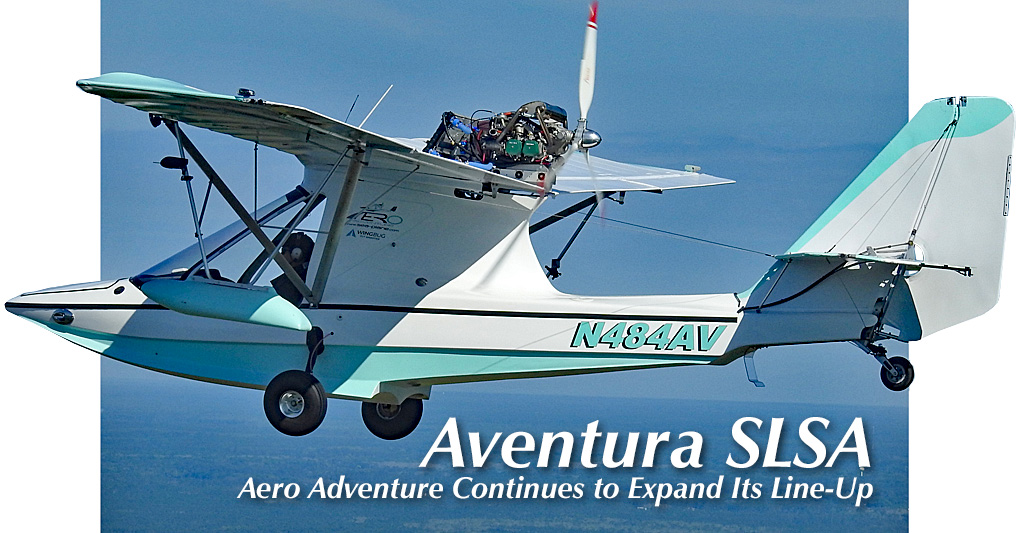
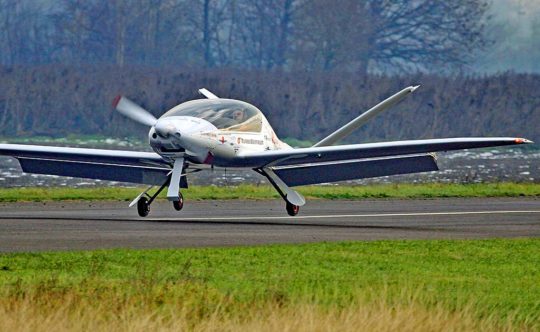 In our strongest month ever, April 2020,
In our strongest month ever, April 2020, 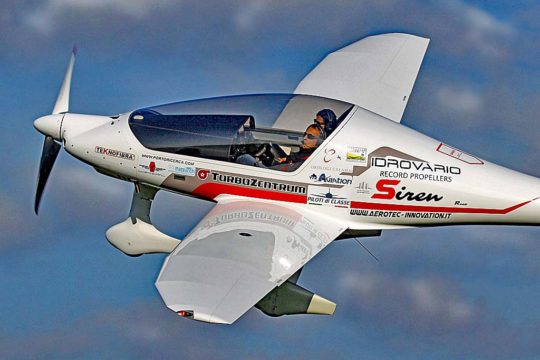
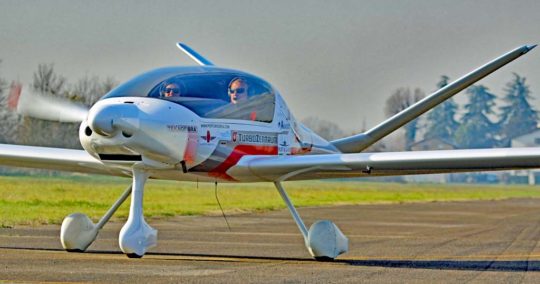
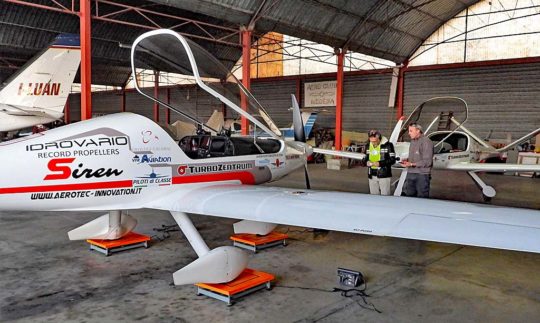
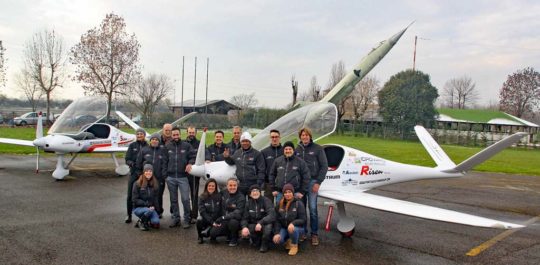
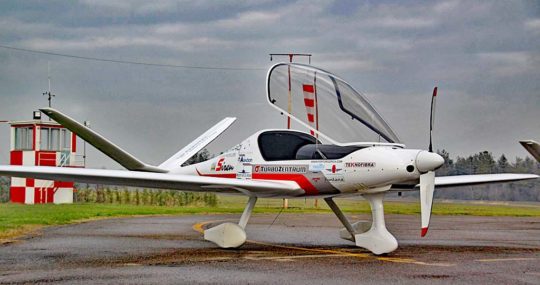 "Things are even more confusing for the [second record for a] 50-kilometer closed-circuit course," said Stéphan. "In every record we attempt, our motivation is to show that our marketing brochure is very accurate without inflated numbers. Because nobody could believe the performance of the fixed-gear Siren with [100 horsepower] 912ULS, we decided to set a new record. The result was an astonishing 288 kilometers per hour (corrected for ISA). We could fly the Risen 914T and set a much faster record, because of retractable gear and an extra 15 horsepower of the
"Things are even more confusing for the [second record for a] 50-kilometer closed-circuit course," said Stéphan. "In every record we attempt, our motivation is to show that our marketing brochure is very accurate without inflated numbers. Because nobody could believe the performance of the fixed-gear Siren with [100 horsepower] 912ULS, we decided to set a new record. The result was an astonishing 288 kilometers per hour (corrected for ISA). We could fly the Risen 914T and set a much faster record, because of retractable gear and an extra 15 horsepower of the 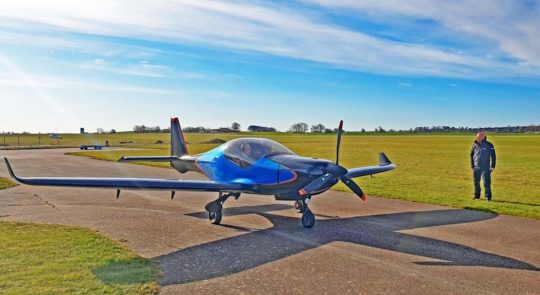
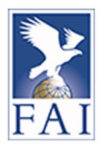 Stéphan observed that I had written (in my
Stéphan observed that I had written (in my 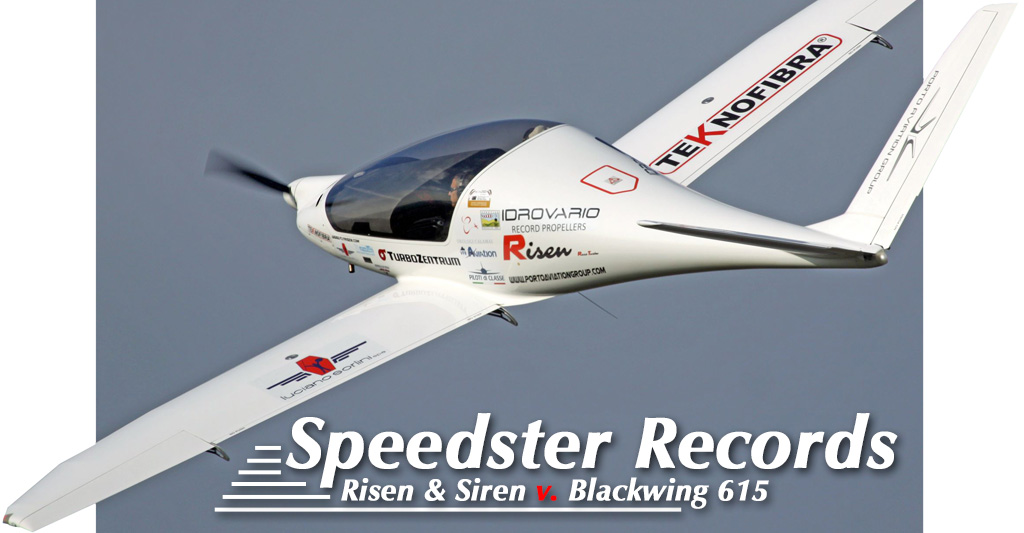
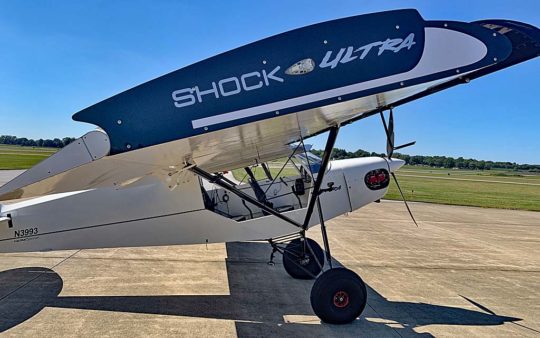 What pilot doesn't want more power? Or speed?
The trouble with more power allowing more speed is that old auto racing line: "Speed costs money! How fast do you want to go?"
How about a not-so-expensive option?
U.S. importer
What pilot doesn't want more power? Or speed?
The trouble with more power allowing more speed is that old auto racing line: "Speed costs money! How fast do you want to go?"
How about a not-so-expensive option?
U.S. importer 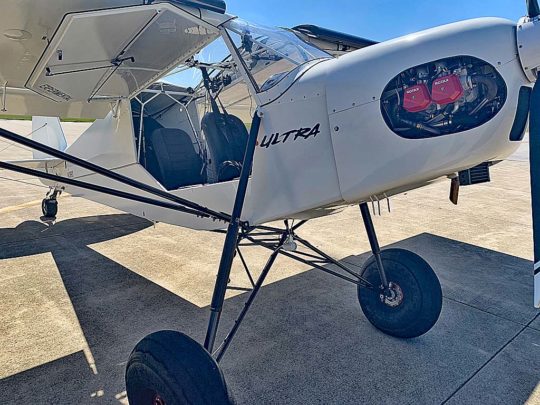
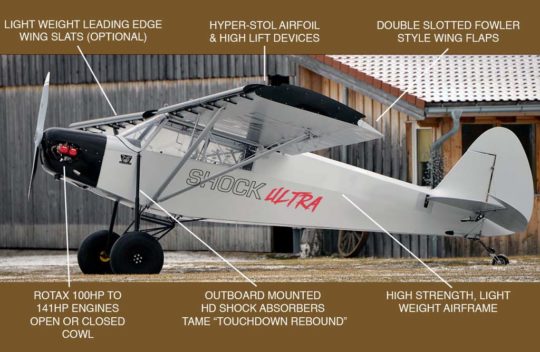 However, as power went up, so did prices. The 915, 340 and 170 mentioned above carry significantly higher price tags, and honestly, not all light aircraft need that much power. Plus, bigger engines are heavier so some of the added power is used to lift the extra engine weight.
Zlin develop Pasquale Russo and U.S. importer Bill Canino think the familiar and proven Rotax 914 Turbo offered a "best of both worlds" proposition.
For 2020, Zlin introduced the Norden concepts.
However, as power went up, so did prices. The 915, 340 and 170 mentioned above carry significantly higher price tags, and honestly, not all light aircraft need that much power. Plus, bigger engines are heavier so some of the added power is used to lift the extra engine weight.
Zlin develop Pasquale Russo and U.S. importer Bill Canino think the familiar and proven Rotax 914 Turbo offered a "best of both worlds" proposition.
For 2020, Zlin introduced the Norden concepts. 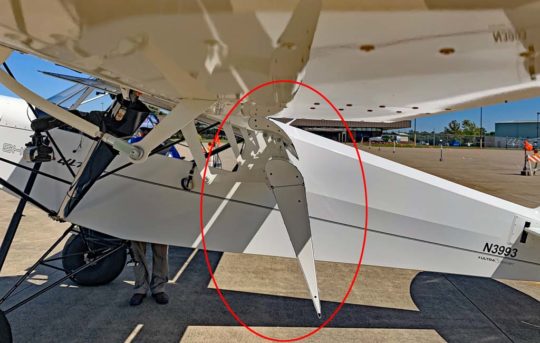
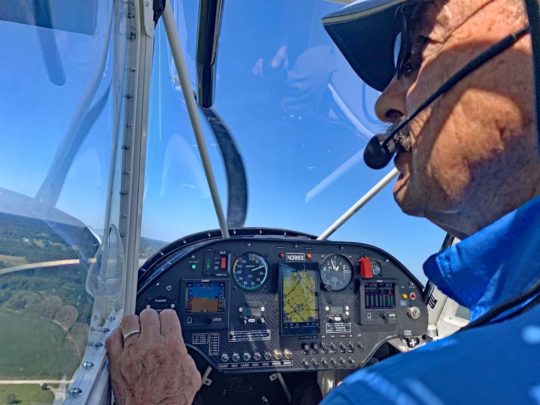 "This required a long, meticulous revision and optimization of the whole airframe," said Pasquale, including fuselage, empennage, landing gear, nose cowl, fuselage skin, the cockpit interior, brakes and control surfaces. It became a reconfigured airplane from spinner to tailwheel.
Careful weight reduction dropped the weight while keep their "hyper STOL" wing performance that can sustain speeds of barely more than 30 mph. "This is more typical for a powered paraglider than for a robust three-axis aircraft while maintaining interesting cruise speeds" Pasquale observed.
"This required a long, meticulous revision and optimization of the whole airframe," said Pasquale, including fuselage, empennage, landing gear, nose cowl, fuselage skin, the cockpit interior, brakes and control surfaces. It became a reconfigured airplane from spinner to tailwheel.
Careful weight reduction dropped the weight while keep their "hyper STOL" wing performance that can sustain speeds of barely more than 30 mph. "This is more typical for a powered paraglider than for a robust three-axis aircraft while maintaining interesting cruise speeds" Pasquale observed.
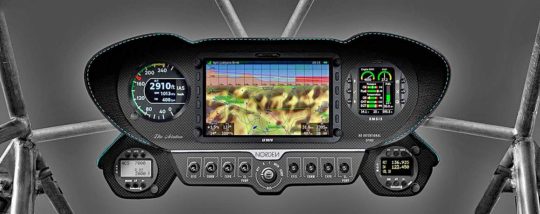
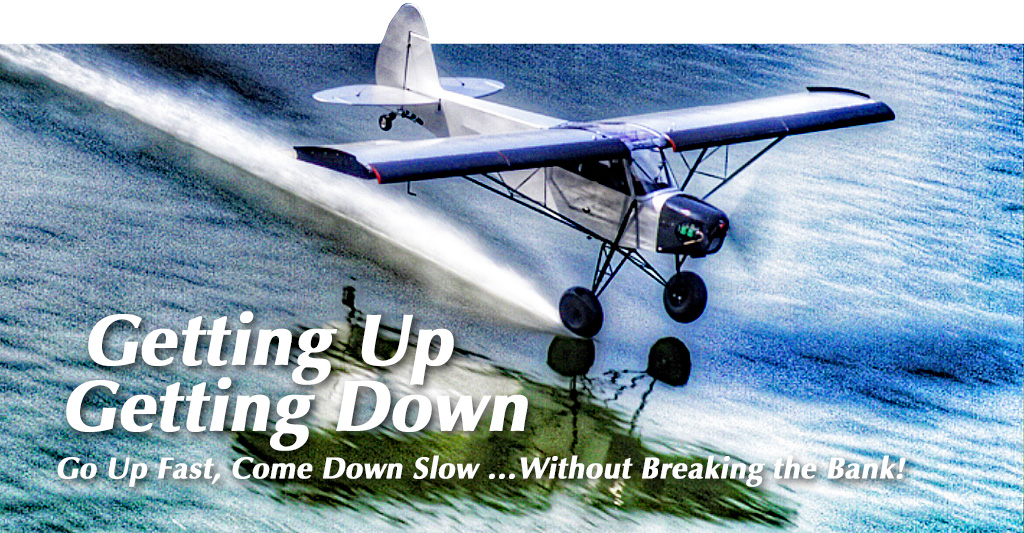
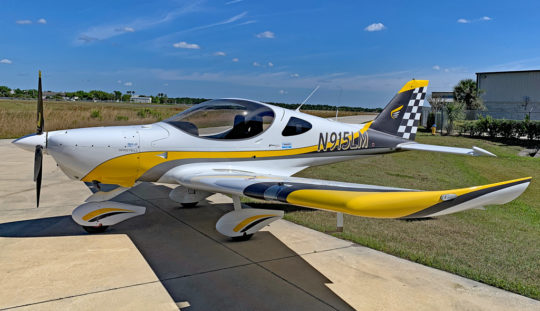 Other than the pure thrill of logging a high groundspeed, going fast is only useful when you're going somewhere. If perhaps your goal is aerial sightseeing then slow (and probably low) is the way to go. If you have to go fast, remember that old saying from auto racing: "Speed cost money; how fast do you want to go?" This equally applies to aviation.
FAA actually drew a speed line back in the early 2000s when the SP/LSA rule was being written (just as now with the LSA 2023 rule in the works). No, I don't refer to the 120-knot speed limit we'll discuss below. I refer to a slower speed, the one implied in the minimum 20 hours required for a Sport Pilot certificate.
Other than the pure thrill of logging a high groundspeed, going fast is only useful when you're going somewhere. If perhaps your goal is aerial sightseeing then slow (and probably low) is the way to go. If you have to go fast, remember that old saying from auto racing: "Speed cost money; how fast do you want to go?" This equally applies to aviation.
FAA actually drew a speed line back in the early 2000s when the SP/LSA rule was being written (just as now with the LSA 2023 rule in the works). No, I don't refer to the 120-knot speed limit we'll discuss below. I refer to a slower speed, the one implied in the minimum 20 hours required for a Sport Pilot certificate.
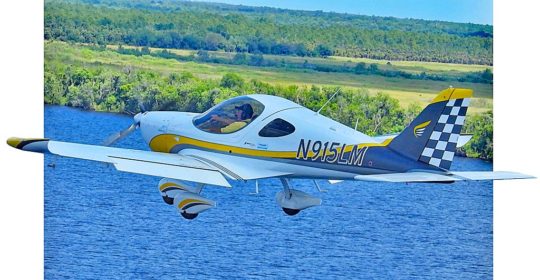 Rule writers separated Light-Sport Aircraft as sub-87 knot and faster. At the time the rule was released, this made sense. America was still flying lots of what we now loosely call "ultralights." These aircraft were simply built, half the empty weight of most LSA today, and flew slower, usually under 100 mph …87 knots.
Then LSA got glass cockpits, leather interiors, high performance engines, autopilots, and more. Prices went up accordingly and today we have a bifurcated market — just like FAA once envisioned, with simpler sub-87 knot airplanes and faster but more costly models.
Rule writers separated Light-Sport Aircraft as sub-87 knot and faster. At the time the rule was released, this made sense. America was still flying lots of what we now loosely call "ultralights." These aircraft were simply built, half the empty weight of most LSA today, and flew slower, usually under 100 mph …87 knots.
Then LSA got glass cockpits, leather interiors, high performance engines, autopilots, and more. Prices went up accordingly and today we have a bifurcated market — just like FAA once envisioned, with simpler sub-87 knot airplanes and faster but more costly models.
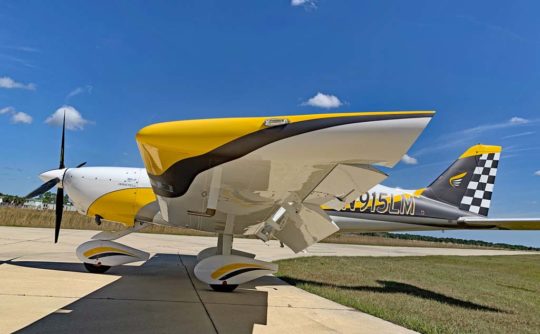 For plenty of pilots, 100 mph is fine for most of their flying including regional travel. Those who yearn for speed or want to travel interstate or cross country want the fastest machine they can afford.
The aircraft I've written about recently —
For plenty of pilots, 100 mph is fine for most of their flying including regional travel. Those who yearn for speed or want to travel interstate or cross country want the fastest machine they can afford.
The aircraft I've written about recently — 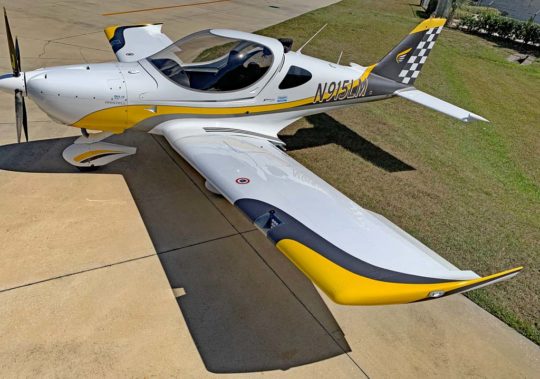 BRM Aero was early to begin work with Rotax's new
BRM Aero was early to begin work with Rotax's new 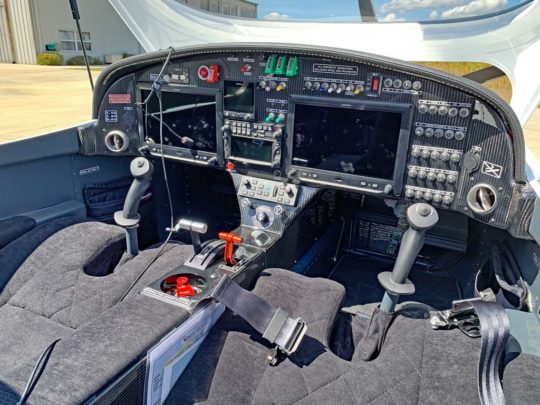 "Vne, Velocity Never Exceed, is an indicated air speed," Lou started in a reply to a Facebook audience. "For example, When the 915iS powered Bristell Speedster is flying at 12,500 feet with a true airspeed of 170 miles per hour or 147 knots, the indicated airspeed is only 118 knots. The Bristell has a 157 knots Vne." A good
"Vne, Velocity Never Exceed, is an indicated air speed," Lou started in a reply to a Facebook audience. "For example, When the 915iS powered Bristell Speedster is flying at 12,500 feet with a true airspeed of 170 miles per hour or 147 knots, the indicated airspeed is only 118 knots. The Bristell has a 157 knots Vne." A good 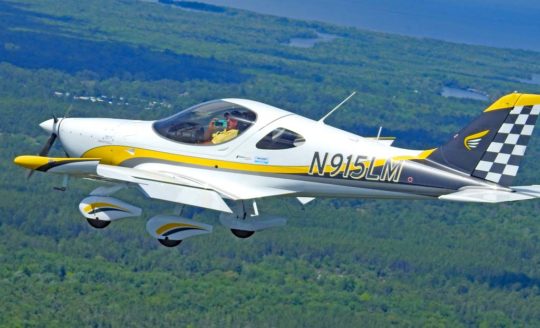
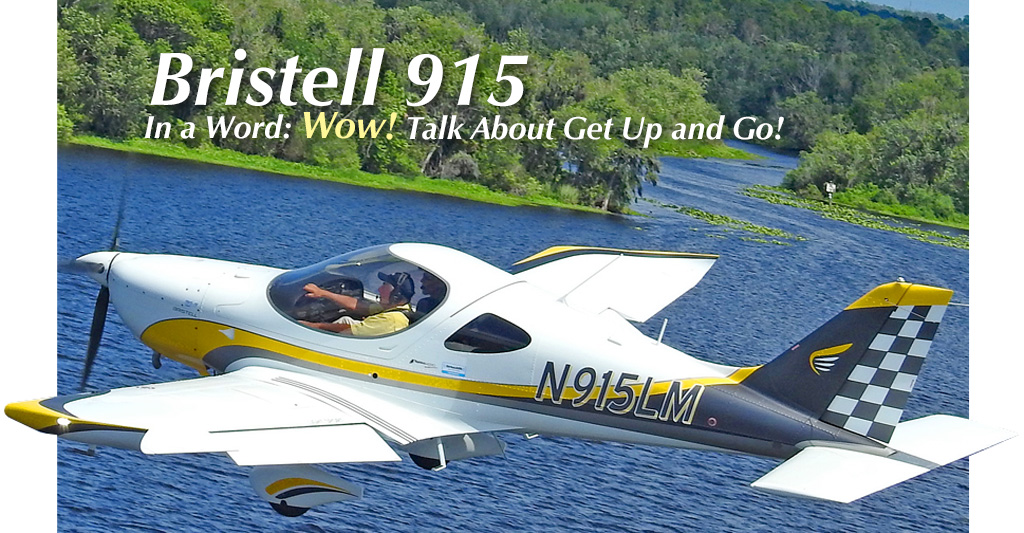
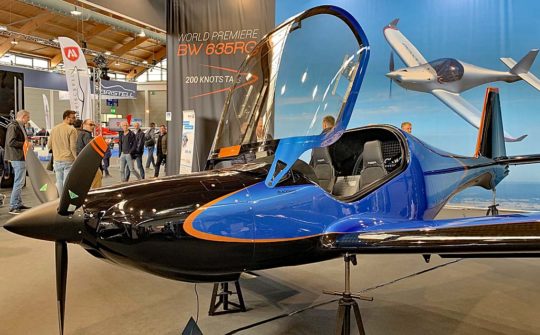 During this coronavirus mess, Sweden has been in the news because authorities did not fully lock down the country. Some closures were recommended and certain folks (older, immune-deficient… you've heard all this repeatedly) were encouraged to self-isolate. Yet pictures show restaurants, streets, and other public venues with plenty of people. Sweden has had deaths, of course, every one of them tragic. Yet it will provide a good baseline with which to judge the effectiveness of lockdown procedures from draconian to… well, Swedish.
However, the greater freedom enjoyed by Swedes allowed an impressive flight only a few days ago.
During this coronavirus mess, Sweden has been in the news because authorities did not fully lock down the country. Some closures were recommended and certain folks (older, immune-deficient… you've heard all this repeatedly) were encouraged to self-isolate. Yet pictures show restaurants, streets, and other public venues with plenty of people. Sweden has had deaths, of course, every one of them tragic. Yet it will provide a good baseline with which to judge the effectiveness of lockdown procedures from draconian to… well, Swedish.
However, the greater freedom enjoyed by Swedes allowed an impressive flight only a few days ago.
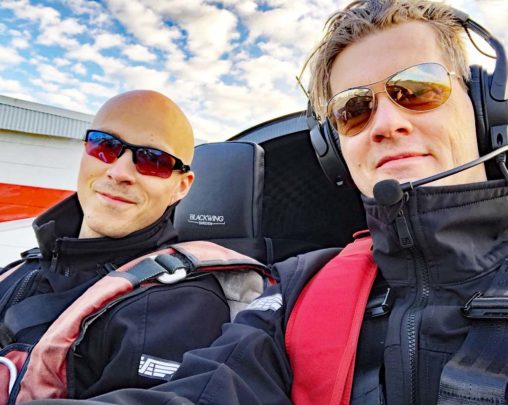
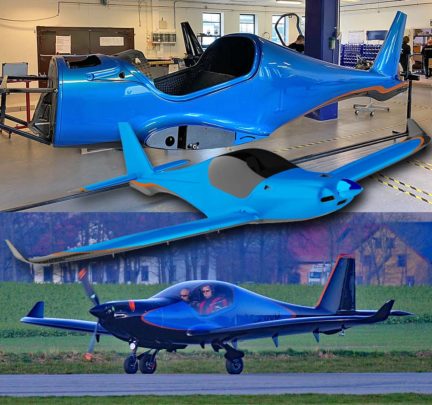
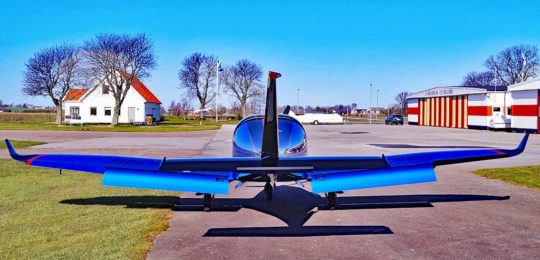 The two pilots from the south of Sweden set two new world records and have filed for FAI (Fédération Aéronautique Internationale) recognition.
Niklas (pilot and CEO of Blackwing) and Fredrik reported their record attempt…
"On Tuesday, April 14th, weather conditions were excellent in Landskrona to try to set a world record," they said. "We flew in cold air, which made the conditions of 10,000 feet for our turbocharged Blackwing 600 RG almost optimal," said Anderberg.
The two pilots from the south of Sweden set two new world records and have filed for FAI (Fédération Aéronautique Internationale) recognition.
Niklas (pilot and CEO of Blackwing) and Fredrik reported their record attempt…
"On Tuesday, April 14th, weather conditions were excellent in Landskrona to try to set a world record," they said. "We flew in cold air, which made the conditions of 10,000 feet for our turbocharged Blackwing 600 RG almost optimal," said Anderberg.
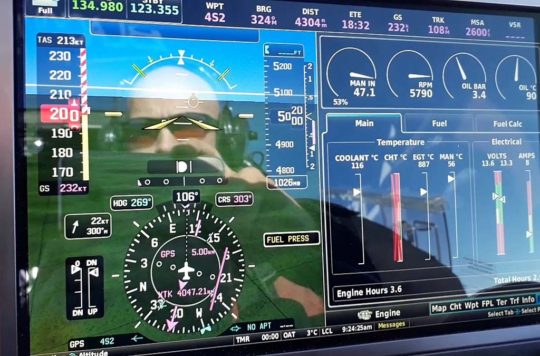 While laying claim to two new world records, to gain proper recognition of their achievement, the performance must now be checked and approved by the International Aviation Sports Association,
While laying claim to two new world records, to gain proper recognition of their achievement, the performance must now be checked and approved by the International Aviation Sports Association, 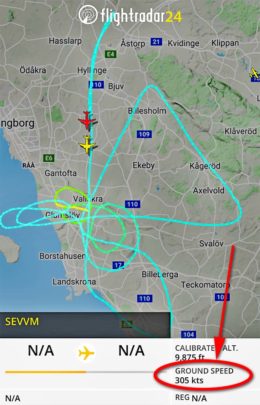 For the official record in Class UL aircraft RAL2T (Movable Aerodynamic Control / Landplane / Flown with two persons / Thermal Engine), previously recognized record holders include:
For the official record in Class UL aircraft RAL2T (Movable Aerodynamic Control / Landplane / Flown with two persons / Thermal Engine), previously recognized record holders include:
